additive manufacturing
description: layer-by-layer material addition for object creation, aka 3D printing
80 results
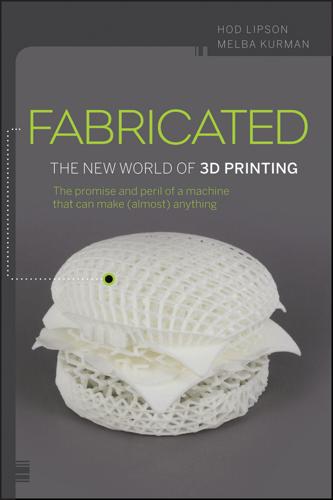
Fabricated: The New World of 3D Printing
by
Hod Lipson
and
Melba Kurman
Published 20 Nov 2012
Sizing the market It’s impossible to know how many small businesses, exactly, have gravitated towards the marketplace for nimble manufacturing services. However, some robust market data exists. Each year, additive manufacturing industry consultant and analyst Terry Wohlers puts together an annual Wohlers Report. The report features market and usage data, plus case studies gathered from roughly 100 of the larger companies worldwide that sell 3D printers, or provide or purchase printing services. The Wohlers Report is a goldmine of insight into the additive manufacturing industry. It has become the industry’s unofficial “state of the union” assessment for analysts, for executives and journalists alike.
…
Three Dimensional Printing (3DP) 3DP, in yet another confusing naming convention, use a process called “three dimensional printing” where the print head squeezes adhesive—or some kind of glue—onto raw powdered material. 3DP was invented in the late 1980s by an MIT student named Paul Williams and his advisor Professor Eli Sachs. At that time, commercial additive manufacturing systems used lasers and sometimes toxic printing materials and were the size of a small truck. Early additive manufacturing machines were complicated to operate and expensive. Since 3DP was a welcome alternative, MIT would later patent the technology underlying 3DP and license it to several companies (where it became the foundation of many of the world’s commercial 3D printers).
…
A 3D printer fabricates three-dimensional objects that you can hold in your hand. 3D printers make things by following instructions from a computer and stacking raw material into layers. For most of human history, we’ve created physical objects by cutting away raw material or using molds to form new shapes. The technical name for 3D printing is “additive manufacturing,” which is actually more descriptive of the actual printing process. 3D printing’s unique manufacturing technique enables us to make objects in shapes never before possible. 3D printing is not a new technology. 3D printers have been quietly doing their work in manufacturing machine shops for decades.

The Brussels Effect: How the European Union Rules the World
by
Anu Bradford
Published 14 Sep 2020
Office, Guidelines for Examination of European Union Trade Marks (2017), https://euipo.europa.eu/tunnel-web/secure/webdav/guest/document_library/contentPdfs/trade_marks/draft-guidelines-2017-wp-lr2/24_part_b_examination_section_4_AG_chap_11_article_7(1)(k)_clean_lr2_en.pdf [https://perma.cc/V2YN-CLK8]. 31.Geographical Indications An Introduction, World Intellectual Property Organization, 31, https://www.wipo.int/edocs/pubdocs/en/geographical/952/wipo_pub_952.pdf [https://perma.cc/3H3M-UNYH]. 32.Comprehensive Economic and Trade Agreement, Canada-E.U., Annex 20-A, (Oct. 30, 2016). 33.EU-Vietnam Free Trade Agreement, Annex 12-A, unsigned. 34.See TPP Final Text, Office of the Trade Representative, arts. 18.30–18.36, https://ustr.gov/sites/default/files/TPP-Final-Text-Intellectual-Property.pdf [https://perma.cc/AN8B-J8UU]. 35.See TPP Final Text, supra note 34, art. 18.32. 36.See Shawn Donnan, TPP deal lifts hopes for US-EU trade pact, Financial Times (Oct. 6, 2015), https://www.ft.com/content/5bde5a48-6bda-11e5-8171-ba1968cf791a (on file with author). 37.See The Third Industrial Revolution, Economist, Apr. 21, 2012, at 15. 38.Additive manufacturing is an industrial production technology that builds 3D objects by adding layer upon layer of material (such as plastic or metal) in precise geometric shapes. While traditional manufacturing often requires removing material through milling or carving, additive manufacturing lays down or adds material to create a 3D object. 39.Richard Kelly & Jörg Bromberger, Additive Manufacturing: A Long-Term Game Changer For Manufacturers, McKinsey, https://www.mckinsey.com/business-functions/operations/our-insights/additive-manufacturing-a-long-term-game-changer-for-manufacturers [https://perma.cc/PMD8-RHFS]. 40.Kelly & Bromberger, supra note 39. 41.Id. 42.Id. 43.Id. 44.Regulation (EC) 2018/302, 2018 O.J.
…
Such a development, to the extent that it applies to a significant number of product markets, may gradually erode the EU’s ability to exert global regulatory clout in the future. One of the most notable new technologies enabling greater customization and local production is additive manufacturing, such as 3D printing.38 Using additive manufacturing, the same machines can produce goods with different features simply by changing the digital file that is used to provide the blueprint. Additive manufacturing relies less on economies of scale and thereby allows for mass customization. In practice, this may give manufacturers the ability to conform to a number of different production standards without substantial additional costs and rely on more dispersed production networks.
…
When production is decentralized across different local markets, products can easily be tailored to local (or even individual) demand, as logistical costs such as long-distance transport are eliminated.39 Additive manufacturing will have the potential to undermine the Brussels Effect in certain industries by disrupting traditional supply chains, lowering the per-unit costs of small production, and allowing for intricate customization. If this happens, there will be circumstances where it is no longer necessary, from a cost perspective, to conform all products to EU standards. Additive manufacturing is growing quickly and is expected to continue to do so over the next several years. Industry analysts predict that by 2020, the direct market for additive manufacturing will grow to $20 billion, possibly reaching $100 billion–$250 billion by 2025.40 Additive manufacturing will have a differential impact on different industries.

99%: Mass Impoverishment and How We Can End It
by
Mark Thomas
Published 7 Aug 2019
Most of these technologies will have entered the mainstream by 2040, so over the next thirty-five years, you can expect to feel their impact. ADDITIVE MANUFACTURING Traditionally, to manufacture a complex structure, you would start with a block and machine away the material you didn’t want. Additive manufacturing works the other way: you build up complex structures by adding material. Additive manufacturing is already well established in specialist areas and has even become available to consumers. You can buy a 3-D printer for under £400. Additive manufacturing has four main advantages over conventional manufacturing techniques: 1. it enables short production runs to be undertaken economically – and customized products can be mass-produced; 2. lead times from concept to product can be substantially reduced; 3. for some applications, costs of production can be reduced; 4. certain types of design – for example, lattices – become feasible with additive manufacturing which would just be too expensive using conventional techniques.
…
Additive manufacturing has four main advantages over conventional manufacturing techniques: 1. it enables short production runs to be undertaken economically – and customized products can be mass-produced; 2. lead times from concept to product can be substantially reduced; 3. for some applications, costs of production can be reduced; 4. certain types of design – for example, lattices – become feasible with additive manufacturing which would just be too expensive using conventional techniques. Initially, the main application of additive manufacturing was in rapid prototyping, reducing a design process which might have taken weeks to days or even hours. As the technology progressed, it became possible to produce working parts using additive manufacturing, initially in polymers and later in metals. 3-D printing has now entered the mainstream. What does this mean in practice? In the short term, it means that some manufactured products will become cheaper – in particular, customized products.
…
Important new technologies will become mainstream In terms of scientific and technological progress, thirty-five years is a long time. But much of today’s sunrise technology is already having a growing impact on our lives. I would pick out the following technologies for special attention, because they seem to me to be harbingers of what is just around the corner: • additive manufacturing – for example, 3-D printing; • nanotechnology – for example, new processes like genetic editing and new materials like graphene; • new computing approaches – for example quantum computing, new applications of narrow artificial intelligence (AI) such as self-driving cars, and even full artificial intelligence (AI) capable of solving any problem a human can solve; • clean energy – possibly even nuclear fusion.

The Fourth Industrial Revolution
by
Klaus Schwab
Published 11 Jan 2016
Gartner has developed a “Hype Cycle” chart (Figure VI) showing the various stages of different 3D printing capabilities and their market impact, and plotting most business uses of the technology as entering the “slope of enlightenment”.95 Figure VI: Hype Cycle for 3D Printing Source: Gartner (July 2014) Positive impacts – Accelerated product development – Reduction in the design-to-manufacturing cycle – Easily manufactured intricate parts (not possible or difficult to do earlier) – Rising demand for product designers – Educational institutions using 3D printing to accelerate learning and understanding – Democratized power of creation/manufacturing (both limited only by the design) – Traditional mass manufacturing responding to the challenge by finding ways to reduce costs and the size of minimum runs – Growth in open-source “plans” to print a range of objects – Birth of a new industry supplying printing materials – Rise in entrepreneurial opportunities in the space96 – Environmental benefits from reduced transportation requirements Negative impacts – Growth in waste for disposal, and further burden on the environment – Production of parts in the layer process that are anisotropic, i.e. their strength is not the same in all directions, which could limit the functionality of parts – Job losses in a disrupted industry – Primacy of intellectual property as a source of value in productivity – Piracy – Brand and product quality Unknown, or cuts both ways – Potential that any innovation can be instantly copied The shift in action An example of 3D printing for manufacturing has been recently covered by FORTUNE: “General Electric’s Leap jet engine is not only one of the company’s bestsellers, it’s going to incorporate a fuel nozzle produced entirely through additive manufacturing. The process, popularly known as 3-D printing, involves building up layers of material (in this case alloyed metals) according to precise digital plans. GE is currently completing testing of the new Leap engines, but the benefit of additive manufactured parts has already been proven on other models.” Source: “GE’s first 3D-printed parts take flight”, Andrew Zaleski, FORTUNE, 12 May 2015, http://fortune.com/2015/05/12/ge-3d-printed-jet-engine-parts/ Shift 20: 3D Printing and Human Health The tipping point: The first transplant of a 3D-printed liver By 2025: 76% of respondents expected this tipping point to have occurred One day, 3D printers may create not only things, but also human organs – a process called bioprinting.
…
Aside from speed and breadth, the fourth industrial revolution is unique because of the growing harmonization and integration of so many different disciplines and discoveries. Tangible innovations that result from interdependencies among different technologies are no longer science fiction. Today, for example, digital fabrication technologies can interact with the biological world. Some designers and architects are already mixing computational design, additive manufacturing, materials engineering and synthetic biology to pioneer systems that involve the interaction among micro-organisms, our bodies, the products we consume, and even the buildings we inhabit. In doing so, they are making (and even “growing”) objects that are continuously mutable and adaptable (hallmarks of the plant and animal kingdoms).4 In The Second Machine Age, Brynjolfsson and McAfee argue that computers are so dexterous that it is virtually impossible to predict what applications they may be used for in just a few years.
…
As drones become capable of sensing and responding to their environment (altering their flight path to avoid collisions), they will be able to do tasks such as checking electric power lines or delivering medical supplies in war zones. In agriculture, the use of drones – combined with data analytics – will enable more precise and efficient use of fertilizer and water, for example. 3D printing Also called additive manufacturing, 3D printing consists of creating a physical object by printing layer upon layer from a digital 3D drawing or model. This is the opposite of subtractive manufacturing, which is how things have been made until now, with layers being removed from a piece of material until the desired shape is obtained.

Exponential: How Accelerating Technology Is Leaving Us Behind and What to Do About It
by
Azeem Azhar
Published 6 Sep 2021
And in Dubai in 2019, my friend Noah Raford spearheaded the then largest 3D-printed object: a single-storey 2,500-square-foot building.15 Printed out of concrete in 17 days, Noah used it as his office for several months. The project used 75 per cent less concrete than a typical design and was built with unheard-of precision. Additive manufacturing is still a tiny business. You’ll find it in prestige products and in highly specialist sectors of the economy – lightweight parts for fighter jets, or medical implants. But the underlying technologies are on an exponential course. Researchers estimate that most additive manufacturing methods are developing at a pace of between 16.7 per cent and 37.6 per cent every year, with the average rate falling in the high thirties.16 Over the next 10 years we will see performance improve 14 times – and, of course, see prices drop concomitantly.
…
Rather than exporting cars, Yu explained, they ‘export the technique that is needed to produce the cars’.1 Vehicles are not loaded onto container ships and sent to their destination. Rather, the company sends design blueprints over to colleagues in the US, who use additive manufacturing techniques to print components locally. From those components, the finished product can be assembled. Yu’s approach could skirt around customs inspectors (and tariffs). Additive manufacturing lets him build wherever his customers are, trade conflicts be damned. Pix Moving is a start-up that reflects how manufacturing will change as we move further into the Exponential Age and, in doing so, unpick our assumptions about globalisation.
…
Of course, there are other methods of making stuff, such as using casts to mould metals or plastic. These have the advantage over chiselling in that they don’t waste any material. But a big disadvantage: casts and moulds only create copies of a single design. Want a new product and you need a new mould. Additive manufacturing, or 3D printing – I’ll use the terms interchangeably – is an exponential technology that delivers the individual detailing of subtractive manufacturing, without the waste. Typically, objects are crafted through computer-aided design. The process involves creating a new object from scratch: by putting together layers upon layers of melted material, using a laser or a device a little like an inkjet printer.
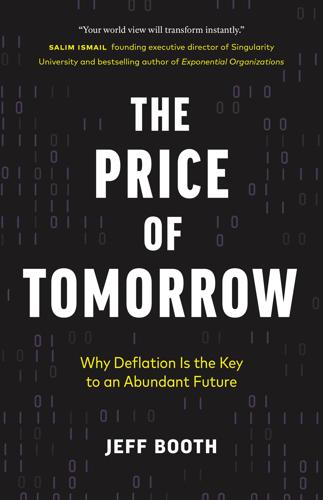
The Price of Tomorrow: Why Deflation Is the Key to an Abundant Future
by
Jeff Booth
Published 14 Jan 2020
What will they do if travelling slows? Additive manufacturing and 3D printing To the general population, the promise of anything we want printed right before our eyes vanished with the first wave of 3D printers that only printed crude versions of knickknacks. That image, of a printer slowly layering plastic into a rudimentary product, has been etched into our minds because the reality was so far away from the promise. Many of us, me included, dismissed a world where anything could be printed in our living rooms as a faraway dream, and the hype cycle of additive manufacturing ended. But it was really only starting.
…
But it was really only starting. The relentless march of technology innovation continued, and today the state of additive manufacturing is vastly different. Now commercially viable for a wide range of applications, the industry is moving fast, having surpassed $7.3 billion in 2017, according to Wohlers Associates.26 Although not yet seen by the public commercially, it is just starting to reach a tipping point. I visited Carbon’s additive manufacturing facility in California recently and was blown away. It was surreal to see the new Adidas shoe, the Yeezy, being printed—manufactured—out of liquid. I have visited hundreds of manufacturers around the world, and this manufacturing facility looked like none I had ever seen.
…
And in addition to speeds of printing that are improving exponentially, the list of materials that can be used in additive manufacturing grows by leaps and bounds every year. From metal to glass to food to cells to new nano-materials, the things that can already be produced is only limited by our imagination. What started in fast prototyping of designs has already moved into and replaced some traditional manufacturing for high cost/low volume parts; it can increase the quality and performance of designs while costing less. The aerospace, automotive, and medical industries, because of their performance needs, have all been early adopters. Additive manufacturing is now used to make lighter, more efficient engines, turbines, and other parts.

The Sharing Economy: The End of Employment and the Rise of Crowd-Based Capitalism
by
Arun Sundararajan
Published 12 May 2016
The Digitization of the Physical Alongside the consumerization of digital, we are now also witnessing a parallel yet equally important shift: the digitization of the physical. Two contemporary developments illustrate how the same three invariant forces, and thus the same economics, that led to the consumerization of digital may reshape our everyday physical objects: the Internet of Things and the emergence of additive manufacturing. The Internet of Things In the not-so-distant future, every “thing” will have the potential to be digitized and networked. In an iconic example (although perhaps not the most cost-effective), a milk carton nearing or getting close to its expiration date will communicate with your refrigerator, which will in turn communicate with your FreshDirect grocery list.
…
Put differently, a physical object will know where it is, how much it is being used, and will be able to arrange automated, digitally enabled transport for itself to its renter without human intervention.8 A physical object becomes, in a sense, like an intelligent iTunes movie file. As a consequence, the “rentability” of objects also expands. On-demand services of all kinds become more viable, more efficient, and more ubiquitous with the Internet of Things. 3-D Printing and Additive Manufacturing Until recently, if you wanted to get into the business of making and selling physical objects, you had to acquire the capabilities of manufacturing and find some way of distributing and selling objects (by connecting, for example, with a wholesaling or retailing network). We are now entering a world where you no longer need a factory or warehouse or distribution network to be engaged in the sale of physical objects.
…
All you need is a design. The game-changing technology at work here is 3-D printing. Industrial era–manufacturing is typically “subtractive”; it starts with physical material—wood, metal, heated resin—and removes portions of it to create the components of the eventual product, using tools, machines, or a mold. Additive manufacturing is the opposite. It starts with a design, and uses a “printer” to additively construct the physical object. How might this reshape the economy? Let’s consider a digital analogue. (I enjoy having that pair of words next to each other.) Twenty years ago, most cities and towns had numerous music retailers with physical storefronts.
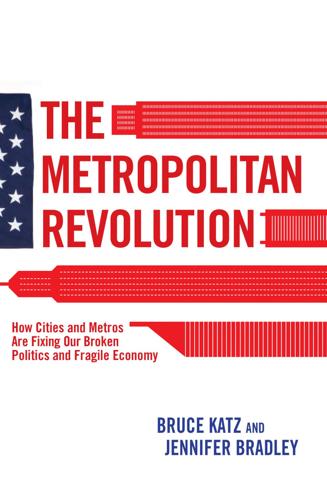
The Metropolitan Revolution: How Cities and Metros Are Fixing Our Broken Politics and Fragile Economy
by
Bruce Katz
and
Jennifer Bradley
Published 10 Jun 2013
For example, the Fund played a critical role in helping the region win a $30 million federal grant to start a new National Manufacturing Innovation Institute for additive manufacturing, also known as 3-D printing, which could revolutionize manufacturing by making it faster and cheaper to create prototypes and new products.29 The grant was awarded in 2012 to a huge consortium of universities, businesses, and nonprofit groups (including three Fund grantees) in Northeast Ohio and two neighboring regions, southwestern Pennsylvania and West Virginia. Additive manufacturing works somewhat like inkjet printing, but instead of ink, the printer uses polymers to create 3-D objects based on digital designs.
…
Additive manufacturing works somewhat like inkjet printing, but instead of ink, the printer uses polymers to create 3-D objects based on digital designs. Prices for 3-D printers and materials have dropped sharply in the past few years, and some observers believe that additive manufacturing will become a truly “disruptive technology,” with applications across industry and even for individual consumers.30 The Economist recently noted that “some people think additive manufacturing will overturn many of the economics of production because it pays no heed to unit labour costs or traditional economies of scale. Designs can be quickly changed, so the technology enables flexible production and mass customisation.”31 As exciting as the prospect of 3-D printing was, getting more than forty institutions and organizations to agree on a vision and codify that vision in a grant application was still a significant undertaking.
…
For our purposes, what matters is that urban universities account for roughly 74 percent (about $27 billion in 2006–07) of all research expenditures at U.S. research universities.14 Brookings has also found a high correlation between the nation’s leading biotech clusters and the strength (as judged by, for example, medical research capacity, National Institutes of Health grants, number of PhDs) of local universities.15 06-2151-2 ch6.indd 118 5/20/13 6:53 PM THE RISE OF INNOVATION DISTRICTS 119 The technology- and knowledge-driven sectors’ renewed emphasis on density is a far cry from the closed innovation spaces of the previous century, isolated labs, and research parks, such as General Electric’s Global Research Center in Niskayuna, New York, and Bell Labs in Murray Hill, New Jersey.16 As the economy evolves and 3-D printing and other disruptive technology enables small-scale manufacturing, the concentration may even extend to the important interplay of innovation and production. It is revealing that the first National Manufacturing Innovation Institute, described briefly in chapter 4, focused on additive manufacturing, is located in the downtown of Youngstown, Ohio, close to the existing base of small and medium-size manufacturing firms. The midtown Detroit location of the watch- and bicycle-making firm Shinola, described later in this chapter, is further evidence of this trend. In many respects, the rise of innovation districts embodies the very essence of cities: an aggregation of talented, driven people, assembled in close quarters, who exchange ideas and knowledge in what the urban historian Sir Peter Hall calls “a dynamic process of innovation, imitation and improvement.”17 Beyond physical location, innovation districts embrace the broader trends in work that are driving the redesign of buildings and office spaces in support of collaboration and open innovation.

The End of Doom: Environmental Renewal in the Twenty-First Century
by
Ronald Bailey
Published 20 Jul 2015
Banning Garrett, founding director of the Atlantic Council’s Strategic Foresight Initiative, asserts that additive manufacturing “is likely to play a significant role in dramatically increasing the efficiency of resource use and in lowering overall carbon emissions, from the process of manufacturing and to delivering products to the end user. As only the material needed for parts is used, there is nearly zero waste.” The US Department of Energy’s Advanced Manufacturing Office noted, “Additive manufacturing has the potential to vastly accelerate innovation, compress supply chains, minimize materials and energy usage, and reduce waste.” Additive manufacturing is also known as 3-D printing; machines build up new items one layer at a time.
…
“building a progressive food system”: New Harvest, www.new-harvest.org/. “is likely to play a significant role”: Banning Garrett, “3D Printing: New Economic Paradigms and Strategic Shifts.” Global Policy 4.1 (February 2014): 70–75. onlinelibrary.wiley.com/doi/10.1111/1758-5899.12119/full. “Additive manufacturing”: Advanced Manufacturing Office, “Additive Manufacturing: Pursuing the Promise.” US Department of Energy, August 2012. “Sustainable development”: Gro Harlem Brundtland, Our Common Future: Report of the World Commission on Environment and Development, 1987. www.un-documents.net/our-common-future.pdf. economic growth proceeded: Angus Maddison, The Maddison Project, Original Maddison Home Page, January 2013. www.ggdc.net/maddison/maddison-project/home.htm.
…
Additive manufacturing is also known as 3-D printing; machines build up new items one layer at a time. The Advanced Manufacturing Office suggested that additive manufacturing can reduce material needs and costs by up to 90 percent. And instead of the replacement of worn-out items, their material can simply be recycled through a printer to return it to good-as-new condition using only 2 to 25 percent of the energy required to make new parts. In addition, 3-D printing on demand will eliminate storage and inventory costs, and significantly cut transportation costs. Sustainable Development “The current global development model is unsustainable.”
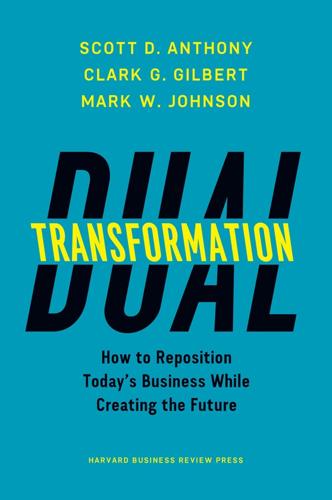
Dual Transformation: How to Reposition Today's Business While Creating the Future
by
Scott D. Anthony
and
Mark W. Johnson
Published 27 Mar 2017
Bigger doesn’t always mean better, however, and the industry slumped significantly in 2016, dragged down by overcapacity. More ominously, three broad disruptive trends—additive manufacturing (or 3-D printing), drone-based delivery, and smart, connected devices—promise to change the face of the industry. As the name describes, additive manufacturing involves building things from materials up rather than traditional manufacturing, which involves cutting, molding, and piecing things together. Traditional manufacturing works best at massive scale; additive manufacturing can be done effectively at very small scales. As of 2016, additive manufacturing is used primarily by hobbyists or commercially for customized parts.
…
As of 2016, additive manufacturing is used primarily by hobbyists or commercially for customized parts. But it is simultaneously getting better and cheaper. As manufacturing decentralizes, additive manufacturing clearly has the potential to have a huge impact on companies whose entire business model rests on moving something from point A to point B. So, too, could unmanned aircraft, known colloquially as drones. Drones started, as many new technologies do, in the military. As prices have dropped, use by hobbyists has exploded. Companies—most notably Amazon (in the United States) and Alibaba (in China)—have begun to experiment with drone-based delivery. Imagine a world with localized microproduction delivered by armies of drones.
…
Index AbbVie, 19 Ablaza, Gerry, 111, 127–128, 142, 184–185, 189 on aligning leadership and boards, 193 on importance of senior support, 192–193 acquisitions for capability development, 66–69 crises of commitment and, 158–163 pharmaceutical industry, 22–23 at SingPost, 51, 52–53 at Singtel, 145 ACS, 67 additive manufacturing, 202–203 adjacencies, 22–23 Adobe acquisitions and partnerships at, 67 business model innovation at, 40, 42 commitment to transformation A at, 44 experimentation at, 148–149 focus at, 117 postdisruption job to be done at, 39 transformation A at, 31–32, 33 transformation journey at, 181 AdSense, 48 Adult Rock Band, 186 advertising at Google, 48, 61, 77 at Manila Water, 127 newspapers and, 3, 77 at Turner, 96, 99 AdWords, 48, 61 Aetna, 23, 87, 182–183 crises of conflict at, 168 decision making at, 99–102 early warning signs at, 108 purpose at, 177 Affiliated Computer Services (ACS), 14, 64 Affordable Care Act, 100 Alibaba Group, 52–53, 67, 201–202, 203 “aliens,” in transformations, 68–69 alignment, 193–194 overestimation of, 119 transformation blurbs and, 129 Alipay, 201–202 Alliance Boots, 60 Alphabet, 47–48, 54 Altman, Elizabeth, 62 Amara, Roy, 104 Amazon, 53–55, 66 business model of, 106 drone-based deliveries, 203 statement of purpose, 178 Amazon Web Services (AWS), 53–55 America Online, 27 Amobee, 145, 188 Andreessen, Marc, 2–3, 206 Andreessen Horowitz, 206 Android, 4, 92 Anthony, Scott D., 62–63, 72–73, 81 on disruptive potential of YouTube, 108 on risk management, 65 Apple, 4, 8 acquisitions and partnerships at, 67 developer kit, 152 focus at, 116, 132 influence of Xerox on, 13 iPhone, 4, 92–93 transformation journey at, 181–182 arbitration, 86–87 Arizona State University (ASU), 56–57, 59, 183–184 partnerships with, 67 Arrested Development, 35 Ayala Corporation, 117, 143–144 Ayala Group, 184 Aztec empire, conquest of, 43 Baffrey, Robert “Boogz,” 127 Baier, Wolfgang, 52, 53 balance in capabilities link, 75 crises of commitment and, 158–160 curiosity to explore and, 139 between transformations A and B, 173–175 Balsillie, Jim, 4 banking, 151–152, 200–202 Barnes & Noble, 12–13 barriers to consumption, identifying, 61–62 Baxter International, 64, 86 behavior celebrating desired, 149–150 changes in customer, 105 predictors of, 63 Bell Labs, 115 Benioff, Marc, 27–28, 151 Berkshire Hathaway, 156 Berners-Lee, Tim, 3 Bertolini, Mark, 23, 87, 100–102, 168, 182–183 on aligning leadership and boards, 193 on communication, 195 on crises of commitment, 187 on crises of conflict, 190 on focus, 194 on quieting critics, 191–192 Bezos, Jeff, 53–55 BlackBerry, 4 Blank, Steve, 65, 153 Blockbuster Video, 32–33, 34 boards, 11, 166–167, 193–194 Boeing Planner, 78 Bohm, David, 130 Borders, 12–13 Boston Red Sox, 1, 3 boundaries, determining, 121–123, 215 Brigham Young University-Idaho (BYU-Idaho), 9, 59 business model at, 41, 42 commitment to transformation A at, 44 exchange team at, 84 identity change at, 170 the job to be done at, 37–38 postdisruption job to be done at, 39 superheroes at, 174–175 transformation B at, 57–58 Bryan, J.
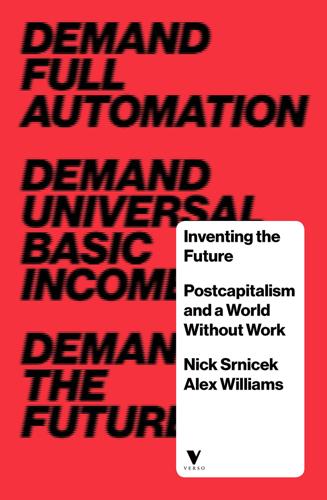
Inventing the Future: Postcapitalism and a World Without Work
by
Nick Srnicek
and
Alex Williams
Published 1 Oct 2015
These are tasks that computers are perfectly suited to accomplish once a programmer has created the appropriate software, leading to a drastic reduction in the numbers of routine manual and cognitive jobs over the past four decades.22 The result has been a polarisation of the labour market, since many middle-wage, mid-skilled jobs are routine, and therefore subject to automation.23 Across both North America and Western Europe, the labour market is now characterised by a predominance of workers in low-skilled, low-wage manual and service jobs (for example, fast-food, retail, transport, hospitality and warehouse workers), along with a smaller number of workers in high-skilled, high-wage, non-routine cognitive jobs.24 The most recent wave of automation is poised to change this distribution of the labour market drastically, as it comes to encompass every aspect of the economy: data collection (radio-frequency identification, big data); new kinds of production (the flexible production of robots,25 additive manufacturing,26 automated fast food); services (AI customer assistance, care for the elderly); decision-making (computational models, software agents); financial allocation (algorithmic trading); and especially distribution (the logistics revolution, self-driving cars,27 drone container ships and automated warehouses).28 In every single function of the economy – from production to distribution to management to retail – we see large-scale tendencies towards automation.29 This latest wave of automation is predicated upon algorithmic enhancements (particularly in machine learning and deep learning), rapid developments in robotics and exponential growth in computing power (the source of big data) that are coalescing into a ‘second machine age’ that is transforming the range of tasks that machines can fulfil.30 It is creating an era that is historically unique in a number of ways.
…
A series of emerging contemporary phenomena must be thought through carefully: for instance, the causes and effects of secular stagnation; the transformations invoked by the shift to an informational, post-scarcity economy; the changes wrought by the introduction of full automation and a universal basic income; the possible approaches to collectivising automated manufacturing and services; the progressive potentials of alternative approaches to quantitative easing; the most effective ways to decarbonise the means of production; the implications of dark pools for financial instability – and so on. Equally, research should be revived on what postcapitalism might look like in practice. Beyond a few outdated classics, very little research has been done to think through an alternative economic system – even less so in the wake of emerging technologies like additive manufacturing, self-driving vehicles and soft AI.68 What role, for instance, could non-state cryptocurrencies have? How does one measure value if not by abstract or concrete labour? How can ecological concerns be fully accounted for in a postcapitalist economic framework? What mechanism can replace the market and overcome the socialist calculation problem?
…
Without denying the significance of logistics to the project of exploiting cheap labour across the world, it is possible to see that logistics would be useful to postcapitalism in a variety of ways.107 Its uses, in other words, go far beyond just capitalist ones. First, any postcapitalist economy will require flexibility in both production (for example, additive manufacturing) and distribution (for example, just-in-time logistics). This enables an economy to be responsive to changes in individual consumption, unlike the grand and inflexible planning efforts of the Soviet era. Without these technologies, postcapitalism would risk repeating all the economic problems already seen in the first communist experiment.108 Second, global logistics makes possible the use of a wide array of comparative advantages – not simply wage differentials.

Frugal Innovation: How to Do Better With Less
by
Jaideep Prabhu Navi Radjou
Published 15 Feb 2015
Based on over 20 years of its own research, GE also believes that these tools will help launch a new industrial revolution. The company has built a full-scale facility in Cincinnati, Ohio, to develop and scale up new alloys, processes and parts for use in additive manufacturing. GE has a global team of 600 engineers at 21 sites that is focused on additive manufacturing. Moreover, GE is committed to developing parts and components using additive techniques in several of its business lines and scaling up in a smart way based on early successes. For instance, GE Aviation plans to manufacture 100,000 additive parts by 2020.
…
It is increasingly used in planes and space travel, and can be produced in large single-piece sections, eliminating the need to rivet individual components together, and making overall construction more robust and secure. New tools for manufacturing 3D printers are responsible for a major breakthrough in manufacturing. When combined with computer-aided design and other digital tools, 3D printers can dramatically reduce manufacturing costs while increasing the capacity to customise products. 3D printers’ additive manufacturing involves adding several successive layers of a material until the product in question is finalised. This resource-efficient approach contrasts with the subtractive method used since the 19th century, in which a larger block of material, usually hard metal, is reduced, hammered, shaved or twisted into shape.
…
One application will be a fuel nozzle for the company’s CFM LEAP jet engine. In health care, GE researchers can print ultrasound transducers faster and more cheaply than using standard manufacturing techniques. GE does not do all this in-house. It works with innovators outside the group, with a view to building a global additive manufacturing ecosystem to spread the use of the technology. The main challenge is developing sufficient capacity for large- and small-scale industrial needs; if achieved, this will create many new manufacturing businesses and jobs. In addition to 3D printing, the plummeting cost of industrial robots – such as Baxter, a $25,000 humanoid robot sold by Rethink Robotics – is unleashing a wave of automation in factories that could not only boost manufacturers’ productivity and quality but also their agility.

Bold: How to Go Big, Create Wealth and Impact the World
by
Peter H. Diamandis
and
Steven Kotler
Published 3 Feb 2015
More exciting, it’s exactly these kinds of robust, elegant interfaces that are beginning to show up in half a dozen exponential technologies—meaning there are literally a half dozen Internet-sized opportunities becoming available to the clued-in entrepreneur. 3-D Printing: The Origins and Power of Additive Manufacturing One such opportunity lies with 3-D printing, a technology now emerging from a thirty-year period of deceptive growth and beginning to disrupt a portion of the $10 trillion global manufacturing industry.7 In the rest of this chapter, we’re going to explore this technology’s past, present, and future and then acquaint you with a few entrepreneurs pioneering that future.
…
As he was then working for a small company in Southern California that specialized in developing applications for ultraviolet radiation, including curing (hardening) UV coatings and inks, Hull realized that curing’s methodology opened the door for an entirely new manufacturing process. Instead of having to create new plastic parts and prototypes through subtractive methods, if he could figure out how to print sheets of UV-hardened plastic atop one another (and attach them to one another), he could build new automotive components via accretion—a method of additive manufacturing in which objects are built up one layer at a time. This was the birth of 3-D printing.9 To give you better idea of how this works, think of an ink-jet printer. These ubiquitous office products are 2-D printers that convert digital instructions (from your computer) into an “object” (aka printed text on a page) by printing along a two-dimensional (x and y) axis.
…
They had forgotten how to innovate.” And Reichental would know, as he was the person brought in to save the company. On paper, Reichental was an odd choice for the job. Having spent the previous twenty-three years working for the Sealed Air Corporation, the inventors of Bubble Wrap, Reichental didn’t know much about additive manufacturing. But what he did understand was innovation. “Sealed Air wasn’t your standard package goods company,” says Reichental. “It was more like a Silicon Valley start-up: totally entrepreneurial, always exploring new possibilities, always trying to crack open new markets.” As a result, Reichental worked dozens of different jobs during his Sealed Air tenure—eventually becoming the company’s fourth-ranking officer and helping grow the firm from a 400-person, $100 million business (when he joined), into an 18,000-person, $5 billion behemoth (when he left).
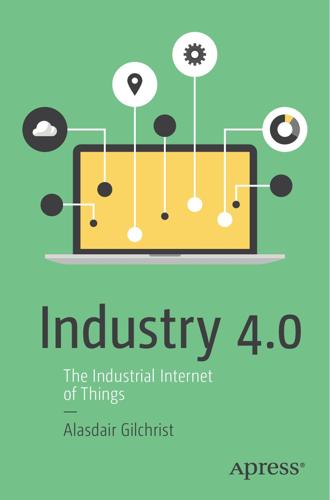
Industry 4.0: The Industrial Internet of Things
by
Alasdair Gilchrist
Published 27 Jun 2016
However, few manufacturing plants will have the storage capacity to store and analyze the vast amounts of data collected. Fortunately, cloud service providers do have the capacity and can create private clouds suitable for manufacturing data storage and processing. Additive Manufacturing Additive manufacturing such as 3D printing enables manufacturers to come up with prototypes and proof of concept designs, which greatly reduces design time and effort. Additive manufacturing also enables production of small batches of customized products that offer more value to customers or end users, while reducing cost and time inefficiencies for the manufacturer. Augmented Reality Businesses are increasingly looking to reduce the maintenance and training overheads associated with production, marketing, and after-sales support.
…
Components created using 3D printing in industry are not models or gimmicks as they are used by NASA, and in the aviation industry in jet engines. Similarly, they are commonly utilized in cars, with at least one manufacturer making their entire vehicle via 3D printing. 3D printing goes beyond just manipulating polymers, ceramics, paper, and metal—it also can be used in health care. Additive manufacturing is used in prosthetics and medical components such as medical sensors and actuators implanted within the body, such as heart pace-makers for example. However, the latest research is being driven by bio-medical requirements such as creating 3D printed skin, and other body tissue, and perhaps soon even complete organs.
…
IOT6 Smart Office, 21 IT sectors, 5 key opportunities and benefits, 8 logistics adopting sensor technologies, 24 advanced telemetric sensors, 26 augmented reality glasses, 25 automating stock control task, 24 barcode technology, 23 Big Data, 26–27 document scanning and verification, 26 forklift, 24–25 Google Glass, 25 multiple sensors, 26 pick-by-paper, 25 RFID, 23–24 SmartLIFT technology, 24–25 temperature and humidity sensors, 24 track and trace, 26 M2M, 3 manufacturers, 10 Oil and Gas industry automated remote control topology, 18 automation, 18 Big Data analytics, 19 cloud computing, 17 data analytics, 16 data collection and analysis, 18 data distribution system, 17 DDS bus, 18 down-hole sensors, 16 drilling and exploration, 16 industry regulations, 16 intelligent real-time reservoir management, 19 interconnectivity, 17 MQPP and XMPP, 17 remote node's status, 17 6LoWLAN and CoAP, 17 technological advances, 16 wireless technologies and protocols, 17 outcome economy, 10 power of 1%, 4 retailer innovations, 29 IT costs, 27 POS, 27–28 real-time reporting and visibility, 28 stock control, 28 sensor technology, 4 smartphone, 20 WSN, 21 WWAN, 5 Industrial Internet system communication protocols Ethernet protocol, 100 industrial Ethernet, 98 TCP/UDP containers, 100 concept of, IIoT, 88 diverse technology, 116 gateways, 115 heterogeneous networks, 116 industrial gateway, 118 industrial protocols current loop, 97 field bus technology, 98 RS232 serial communications, 96 proximity and access network address types, 114 IIoT context, 115 IPv4, 109 IPv6, 112 IPv6 Subnets, 114 NAT, 111 proximity network, 89 wireless communication technology, 102 bluetooth low energy, 103 IEEE 802.15.4, 102 NFC, 107 RFID, 106 RPL, 108 6LoWPAN, 107 Thread, 107 Wi-Fi backscatter, 105 ZigBee, 103 ZigBee IP, 104 Z-Wave, 105 WSN edge node, 90 functional layers, 93 IP layers vs. IIoT layers, 95 Index low-power technology, 91 network protocols, 91 OSI table, 93 web 2.0 layers, 94 Industrial Internet systems (IISs), 66 Industrial systems (ISs), 66 Industry 4.0 advantages, 199 big data and analytics, 208 additive manufacturing, 210 architecture, 211 augmented-reality-based systems, 210 business processes, 213 cloud data, 210 customer acceptance, 215 customer evaluation, 214 cyber-security, 210 equipment, 212 horizontal and vertical system integration, 209 IOT, 209 products, 213 simulation, 209 smart manufacturing, 211 supply chains, 213 use of, robots, 209 workforce, 212 characteristics, 199 cyber-physical systems, 196 definitions, 197 design principles decentralization, 207 interoperability, 207 modularity, 208 real time capability, 208 services, 208 virtualization, 207 dynamic process control, 196 global networks, 195 manufacturing processes, 196 value chain, 201 business benefits, 205 Cost-cutting, 203 creation, 203 horizontal activities, 201 quality, features, 203 support function, 202 In-flight entertainment (IFE), 182 Internet of Things (IOT), 1–2, 29 IOT6 Smart Office, 21 IP, 126 IPv6, 21, 23 L Late-binding, 133 M M2M learning and artificial intelligence, 56 Machine-to-machine (M2M), 3, 6 Message bus, 132 Message queue telemetry transport (MQTT), 136 Micro-electro-mechanical systems (MEMs), 53 Microservices, 151 Mobile device management (MDM), 158 Multiprotocol label switching (MPLS), 122 N, O Near field communication (NFC), 20, 107 Network address translation (NAT), 111 Network functionality virtualization (NFV), 42 P Point of sales (POS) machines, 27–28 Profinet, 123–124 Programmable logic controls (PLCs), 183, 224 Proof-of-concept (PoC), 35 Prophet, 141 Publish/subscribe protocol, 133 Q Quality of service (QoS), 122, 138 249 250 Index support modules and options, 148 vs.

The Singularity Is Nearer: When We Merge with AI
by
Ray Kurzweil
Published 25 Jun 2024
BACK TO NOTE REFERENCE 269 See “Cytosurge FluidFM µ3Dprinter, World’s First 3D Printer at Sub-Micron Direct Metal Printing,” Charbax, YouTube video, May 21, 2017, https://www.youtube.com/watch?v=n9oO6EiBt40; Sam Davies, “Nanofabrica Announces Commercial Launch of Micro-Level Resolution Additive Manufacturing Technology,” TCT Magazine, March 14, 2019, https://www.tctmagazine.com/additive-manufacturing-3d-printing-news/nanofabrica-micro-level-resolution-additive-manufacturing. BACK TO NOTE REFERENCE 270 For more on 3D-printed fabric, see Zachary Hay, “3D Printed Fabric: The Most Promising Projects,” All3DP, November 7, 2019, https://all3dp.com/2/3d-printed-fabric-most-promising-project; Roni Jacobson, “The Shattering Truth of 3D-Printed Clothing,” Wired, May 12, 2017, https://www.wired.com/2017/05/the-shattering-truth-of-3d-printed-clothing.
…
BACK TO NOTE REFERENCE 262 For a wide sampling of views from 3D-printing experts on trends for the industry, and photos showing improving resolution in manufactured feature sizes, see Michael Petch, “80 Additive Manufacturing Experts Predict the 3D Printing Trends to Watch in 2020,” 3DPrintingIndustry.com, January 15, 2020, https://3dprintingindustry.com/news/80-additive-manufacturing-experts-predict-the-3d-printing-trends-to-watch-in-2020-167177; Leo Gregurić, “The Smallest 3D Printed Things,” All3DP, January 30, 2019, https://all3dp.com/2/the-smallest-3d-printed-things. BACK TO NOTE REFERENCE 263 “How It Works,” FitMyFoot, accessed June 29, 2022, https://web.archive.org/web/20220629040739/https://fitmyfoot.com/pages/how-it-works.
…
By comparison, so-called subtractive manufacturing wastes a lot of material and is unable to produce certain shapes. In the 1980s, though, a new family of technologies began to emerge.[261] Unlike previous methods, they created parts by stacking or depositing relatively flat layers and building them up into a three-dimensional shape. These techniques have come to be known as additive manufacturing, three-dimensional printing, or 3D printing. The most common types of 3D printers work somewhat like an ink-jet printer.[262] A typical ink-jet passes back and forth over a piece of paper, squirting ink from a cartridge out of a nozzle in the places software directs it to. Instead of ink, 3D printers use a material like plastic and heat it until it is soft.

No Ordinary Disruption: The Four Global Forces Breaking All the Trends
by
Richard Dobbs
and
James Manyika
Published 12 May 2015
Today, new car models offer the latest advances in driver-assist systems, such as braking, parking, and collision avoidance. By 2025, the driverless revolution in ground and airborne vehicles could be well underway, especially if the regulatory framework keeps pace with the changes. Finally, additive manufacturing technologies could become another disruptive force in production. While they are not new, 3-D printers are becoming more prevalent because of better technology and performance, new materials, and falling prices. Their use in simple consumer goods and prototypes is widely known. Today, they are also used in medical and dental products, such as hearing aids, dental braces, and prosthetic limbs, and are starting to be used in other high-complexity, low-volume applications, such as aerospace components and turbines.
…
More than 90 percent of eBay commercial sellers export to other countries, compared with an average of less than 25 percent of traditional small businesses.28 12 The Disruptive Dozen Twelve technologies have massive potential for disruption in the coming decade CHANGING THE BUILDING BLOCKS OF EVERYTHING 1.Next-generation genomics Fast, low-cost gene sequencing, advanced big data analytics, and synthetic biology (“writing” DNA) 2.Advanced materials Materials designed to have superior characteristics (e.g., strength, weight, conductivity) or functionality RETHINKING ENERGY COMES OF AGE 3.Energy storage Devices or systems that store energy for later use, including batteries 4.Advanced oil and gas exploration and recovery Exploration and recovery techniques that make extraction of unconventional oil and gas economical 5.Renewable energy Generation of electricity from renewable sources with reduced harmful climate impact MACHINES WORKING FOR US 6.Advanced robotics Increasingly capable robots with enhanced senses, dexterity, and intelligence used to automate tasks or augment humans 7.Autonomous and near-autonomous vehicles Vehicles that can navigate and operate with reduced or no human intervention 8.3-D printing Additive manufacturing techniques to create objects by printing layers of material based on digital models IT AND HOW WE USE IT 9.Mobile Internet Increasingly inexpensive and capable mobile computing devices and Internet connectivity 10.Internet of things Networks of low-cost sensors and actuators for data collection, monitoring, decision making, and process optimization 11.Cloud technology Use of computer hardware and software resources delivered over a network or the Internet, often as a service 12.Automation of knowledge work Intelligent software systems that can perform knowledge work tasks involving unstructured commands and subtle judgments The data avalanche is set to become more powerful only because of a movement toward “open data,” in which data are freely shared beyond their originating organizations—including governments and businesses—in a machine-readable format at low cost.
…
For businesses, however, anticipating and preparing for the next wave of the technological tsunami can be the difference between success and failure. Early birds will be challenged to place technology bets amid the extraordinary diversity of new technologies. For instance, within the realm of additive manufacturing—just one of the dozen disruptions we identify—a wide range of technologies and materials exists. They include laser sintering with powdered metal, fused deposition molding with melted plastic, and 3-D printers, which range in size and cost from $1,000 hobby printers to industrial-scale printers costing hundreds of thousands of dollars.
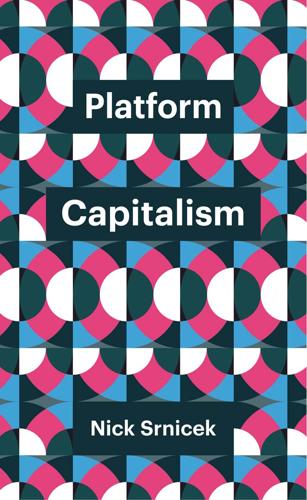
Platform Capitalism
by
Nick Srnicek
Published 22 Dec 2016
As workers, we are to be liberated from the constraints of a permanent career and given the opportunity to make our own way by selling whatever goods and services we might like to offer. As consumers, we are presented with a cornucopia of on-demand services and with the promise of a network of connected devices that cater to our every whim. This is a book on this contemporary moment and its avatars in emerging technologies: platforms, big data, additive manufacturing, advanced robotics, machine learning, and the internet of things. It is not the first book to look at these topics, but it takes a different approach from others. In the existing literature, one group of commentaries focuses on the politics of emerging technology, emphasising privacy and state surveillance but leaving aside economic issues around ownership and profitability.
…
Over the past 40 years the jet engine industry has been characterised by very few new companies, and no companies leaving the industry.54 Instead the three major firms have competed intensely among themselves by introducing incremental technological improvements, in an effort to gain an edge. This technological competition continues today, when the jet engine industry pioneers the use of additive manufacturing. (For instance, GE’s most popular jet engine has a number of parts that are now 3D printed rather than welded together out of different components.55) But margins on the engines themselves remain small, and competition tight. By contrast, the maintenance of these engines involves much higher profit margins – seven times higher, according to estimates.56 The challenge with maintenance is that it is quite easy for outside competitors to come in to the market and take the profits away.
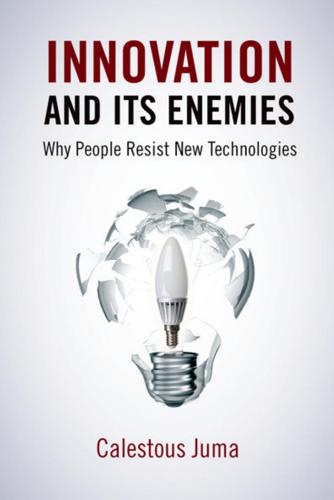
Innovation and Its Enemies
by
Calestous Juma
Published 20 Mar 2017
Emerging economies have to make complex decisions related to the impact of infrastructure projects in the same way that advanced countries grapple with social concerns in new fields such as nanotechnology, robotics, unmanned aerial vehicles, synthetic biology, artificial intelligence, and additive manufacturing (3D printing).8 Much of the public debate is intended to influence government policy on science, technology, and engineering. In this regard, the capacity of governments to assess the available information and use it for decisionmaking is an essential element of the debate. Political leadership on innovation and the existence of requisite institutions of science and technology advice are an essential aspect of economic governance.
…
With the held evidence, regulators “can use experimental rules, regulatory sunsets, or rulemaking deadlines to calibrate their approach to novel technologies or business practices.”60 The point is to provide a framework for informed decisionmaking and rule-making. Equally important is the role of science and technology advice in ensuring that the law can adequately reflect the characteristics of emerging technologies. An example of the tensions is the rise of additive manufacturing, or 3D printing, which is advancing faster than the law can catch up.61 One of the main legal challenges is the potential convergence of digital information and physical objects.62 Proposals to reduce technological tensions could include exempting digital information used in 3D printing from copyright infringement.63 What may appear on the surface as being intellectual property concerns may in fact reflect deeper tensions between technological innovation and incumbency.
…
See also Science advice US National Academy of Engineering, 12 US National Academy of Sciences, 237, 249 Activism. See also Lobbying and lobby groups environmental movement, 14, 32 globalization and, 41 Grange movement, 103 pure foods movements, 24, 335n22 temperance (teetol) movement, 57, 63 Adam, Meldrum & Anderson, 155 Additive manufacturing (3D printing), 301, 306 Adoption of Bt technology, 244, 252 of coffee, 297 of disease-resistant wheat cultivars, 228 of innovation, 11, 124 of tractors, 127, 139 of transgenic products, 244–245, 276 Adulteration of food, 97, 103, 106 Advertising, role in technological innovation, 17 Advisory bodies, 7, 286–287, 290–291 Advocacy.

Thank You for Being Late: An Optimist's Guide to Thriving in the Age of Accelerations
by
Thomas L. Friedman
Published 22 Nov 2016
Kurniawan, who, GE tells us, “runs a small engineering and design firm called DTECH-ENGINEERING with his brother,” added: “That’s why I want to be familiar with additive manufacturing as soon as possible.” GE ended up offering the Hungarian intern a job. Although he clearly had enormous talent, that Hungarian student had failed his engineering structural analysis class, said Bill Carter, a senior mechanical engineer in GE’s Additive Manufacturing Lab: “So it shows that if you get young people excited about something, they feel and can relate to, they get excited—and instead of being in class and studying, he went out and [entered our contest].
…
As I wrote in a column, within weeks they had received 697 entries from all over the world—from companies, individuals, graduate students, and designers. According to the GE website: In September [2013], the partners picked 10 finalists who received $1,000 each. Aviation 3D printed the 10 shortlisted designs at its additive manufacturing plant in Cincinnati, Ohio. GE workers made the brackets from a titanium alloy on a direct metal laser melting (DMLM) machine, which uses a laser beam to fuse layers of metal powder into the final shape. The team then sent the finished brackets to GE Global Research (GRC) in Niskayuna, New York, for destruction testing.
…
Although he clearly had enormous talent, that Hungarian student had failed his engineering structural analysis class, said Bill Carter, a senior mechanical engineer in GE’s Additive Manufacturing Lab: “So it shows that if you get young people excited about something, they feel and can relate to, they get excited—and instead of being in class and studying, he went out and [entered our contest]. And he went and learned from people he never would have talked to.” Discussing this whole project two years later, Prabhjot Singh, manager of the Additive Manufacturing Lab, explained to me just how much these global flows are being leveraged by a company such as GE today: “When you are looking for new ideas, you can now bring in a diversity of responses worldwide, and you engage the community to drive speed. I can rapidly scale and descale my team depending on how much I want to leverage the community. This helps us to stay up-to-date on things.” But all of this also means that with all of these energy flows in all of these directions, competition can now come from so many more directions, individuals, and companies.

The Truth Machine: The Blockchain and the Future of Everything
by
Paul Vigna
and
Michael J. Casey
Published 27 Feb 2018
This would allow all members of a supply-chain community to monitor the activity of each other’s credentialed staff. Chipotle, for example, could see in real time whether a properly credentialed person in a beef facility is carrying out appropriate sterilization and disinfection procedures. This kind of provable, transparent credentialing will be especially important for what’s called additive manufacturing. That technology, the industrial version of 3D printing, is central to the dynamic, on-demand production model of the so-called Industry 4.0 movement, a phrase that describes a manufacturing sector that can respond in rapid time to changing consumer and other demands. 3D printers are already producing parts that are lighter than traditionally built parts, are much stronger in design, and are more readily produced on demand for machines as sophisticated as NASA rockets and Air Force fighters.
…
That technology, the industrial version of 3D printing, is central to the dynamic, on-demand production model of the so-called Industry 4.0 movement, a phrase that describes a manufacturing sector that can respond in rapid time to changing consumer and other demands. 3D printers are already producing parts that are lighter than traditionally built parts, are much stronger in design, and are more readily produced on demand for machines as sophisticated as NASA rockets and Air Force fighters. But for mission-critical products like these, there’s also a risk, one that’s put into context by James Regenor, director of the additive manufacturing and innovation unit at precision parts manufacturer Moog, Inc.: “How can the maintenance crew on a U.S. aircraft carrier have absolute confidence that the software file they downloaded to 3D-print a new part for a fighter jet hasn’t been hacked by a foreign adversary?” To tackle this problem, Regenor’s team at Moog has launched a service it calls Veripart, which uses blockchain technology to, among other things, verify the software design and upgrading work performed by different providers of 3D-printed products along a supply chain.
…
That makes sense because many big manufacturers think of their supply chains as static concepts, with defined members who have been certified to supply this or that component to a finished product. But in the rapidly changing world of the Fourth Industrial Revolution, this might not be the most competitive option. Emerging technologies such as additive manufacturing, where production can be called up anywhere and delivered by anyone with access to the right software files and a sufficiently configured 3D printer, are pointing to a much more fluid, dynamic supply-chain world, where suppliers come and go more easily. In that environment, a permissionless system would seem necessary.
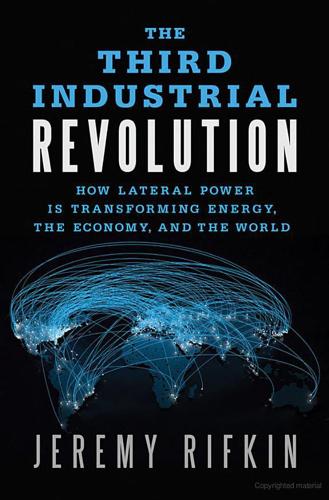
The Third Industrial Revolution: How Lateral Power Is Transforming Energy, the Economy, and the World
by
Jeremy Rifkin
Published 27 Sep 2011
All sorts of goods, from jewelry to mobile phones, auto and aircraft parts, medical implants, and batteries, are being “printed out” in what is being termed “additive manufacturing,” distinguishing it from the “subtractive manufacturing,” which involves cutting down and pairing off materials and then attaching them together.20 Industry analysts forecast that millions of customers will routinely download digitally manufactured, customized products and “print them out” at their business or residence. 3-D entrepreneurs are particularly bullish about additive manufacturing, because the process requires as little as 10 percent of the raw material expended in traditional manufacturing and uses less energy than conventional factory production, thus greatly reducing the cost.
…
When the energy used in the process is renewable and also generated on site, the full impact of a lateral Third Industrial Revolution becomes strikingly apparent. In the same way that the Internet radically reduced entry costs in generating and disseminating information, giving rise to new businesses like Google and Facebook, additive manufacturing has the potential to greatly reduce the cost of producing hard goods, making entry costs sufficiently low to encourage hundreds of thousands of mini manufacturers—Small and Medium Sized Enterprises (SMEs)—to challenge and potentially out-compete the giant manufacturing companies that were at the center of the First and Second Industrial Revolution economies.

The New Trading for a Living: Psychology, Discipline, Trading Tools and Systems, Risk Control, Trade Management
by
Alexander Elder
Published 28 Sep 2014
(Chart by Stockcharts.com) The Impulse System The Impulse system can sharpen any method of finding trades, whether technical or fundamental. Let's review an example, using the stock of Stratasys, Inc. (SSYS)—one of the two leading stocks in the additive manufacturing industry. In 2012, I published the world's first popular e-book on additive manufacturing in which I called for a boom in its stocks. Vertical green arrows mark bars immediately following red bars. Red prohibits you from buying. The best time to buy is immediately following red's disappearance. You can see how those green arrows pick one intermediate bottom after another, including the buy signal at the right edge of the chart.
…
Its divergences from prices identify intermediate and even major turning points (Figure 30.2). Its spikes, especially near the bottoms, mark approaching trend reversals. Figure 30.2 SSYS daily, 26-day EMA, 13-day Force Index. (Chart by Stockcharts.com) Long-Term Force Index Stratasys, Inc. (SSYS) is one of the two leading companies in the rapidly emerging additive manufacturing (AM) market. In the two years since I wrote the world's first popular e-book on investing in this technology, AM stocks have become investors' favorites. A technical pattern has emerged, with rallies driven by amateurs piling in and sharp declines as they panic and bail out. The 13-day Force Index does a good job of catching those waves.

The Coming Wave: Technology, Power, and the Twenty-First Century's Greatest Dilemma
by
Mustafa Suleyman
Published 4 Sep 2023
All the promise (and peril) of robotics is amplified by their ability to coordinate in groups of unrestricted size, an intricate choreography that will reset the rules of what is possible, where, and in what time frame. Robots today still often don’t look like the humanoid robots of the popular imagination. Consider the phenomenon of 3-D printing or additive manufacturing, a technique that uses robotic assemblers to layer up construction of anything from minuscule machine parts to apartment blocks. Giant concrete-spraying robots can build dwellings in a matter of days for a fraction of what traditional construction might have cost. Robots can operate with precision in a far greater range of environments for far longer periods than humans.
…
A B C D E F G H I J K L M N O P Q R S T U V W X Y Z A Aadhaar, 126 academia, 128 accessibility of new technology AI, 69 decentralization and, 198 dematerialization and, 190 genetic engineering, 82–83 military applications and, 106, 126 power and, 163–64, 198, 199 Acemoglu, Daron, 179, 276, 278 Acheson-Lilienthal Report, 42 additive manufacturing. See 3-D printing Aerorozvidka, 103–4 agriculture challenges of, 136–37 climate change and, 138 as general-purpose technology, 27 profit motive and, 133 robotics and, 93–94 as technology wave, 28 AI Act (EU), 229, 260 AI Incidents Database, 246 air gaps, 241 airlines, 267–68 AlexNet, 58–59 algorithms, 63, 114, 247 Alibaba, 66 Allison, Graham, 123 Alphabet, 128, 256, 257 AlphaFold, 89–90, 109 AlphaGo, 53–54, 113, 117–19, 120 AlphaZero, 54 alternatives, 234 Altos Labs, 85 Amazon, 94–95, 189 Anduril, 166 anthrax, 174 anti-aging technologies.
…
See hyper-evolution Sputnik, 119–20, 126 Stability AI, 199 Stable Diffusion, 69 stagnation, 217–21 Starlink, 104 start-up myth, 141 steam engine, 23, 131 Stephenson, George, 131 stirrup, 183–84 stone tools, 26 superintelligence, 74–75, 77, 115 surveillance audits and, 248 dystopia and, 215–17 post-sovereign world and, 193–96, 206 regulation and, 228 resistance to, 277–78 Sutskever, Ilya, 59 swarming robots, 95–96 Switch Transformer, 68 Sycamore, 122 synthetic biology AI and, 89–90, 109 audits and, 247–48 catastrophe scenarios and, 208–9 computers and, 87–88 current applications, 84–85 decentralization and, 200 deep learning and, 90–91 defined, viii dematerialization and, 190 development of, 55 international cooperation and, 265–66 omni-use technology and, 112 potential of, 85–87 power of, 56 profit motive and, 134 research unpredictability and, 129–30 See also coming wave; gene editing synthetic media, 169–71, 172–73 Synthia, 84 systems biology, 85 Szilard, Leo, 41 T taxation, 261–62 technological unemployment, 177–81, 261, 262, 282 technology defined, viii, 26 failures of, 18 interrelated nature of, 56–57 societal dependence on, 218–19 as symbiotic with nation-states, 156–58 ubiquity of, 235–36 unintended consequences of, 35–36 See also coming wave technology characteristics; specific technologies technology cost decreases AI and, 64, 68 computing, 108 containment and, 39, 43, 233–34 genetic engineering, 80, 81, 83, 84 genome sequencing, 81 power and, 102 proliferation and, 31 robotics, 95, 96 technology waves, 6, 16, 25–26 acceleration of, 28–29, 92 diffusion and, 30–31 evolution and, 26–27 inevitability of, 29, 47 invisibility of, 27, 73 material and, 54–55 proliferation and, 32–34 resignation to, 47 unpredictability of, 29 urbanization and, 27–28 telephone, 31 television, 157 terrorism, 44–45, 160–62, 207, 212–13 Thiel, Peter, 201 3-D printing (additive manufacturing), 96, 109, 166, 190 Tilly, Charles, 157 Tiwari, Manoj, 169–70 Toffler, Alvin, 29 tokens, 63 totalitarianism. See authoritarianism; surveillance traffic optimization, 98 transcriptors, 88 transformers, 64, 90–91 transistor, 32–33, 67 Treaty on the Non-proliferation of Nuclear Weapons (1968), 43, 263 Tsar Bomba, 42 Tsinghua University, 121 TSMC, 251 Turing, Alan, 35, 75 23andMe, 81 2001: A Space Odyssey, 110 U Uighur ethnic cleansing, 195 Ukraine, 44, 103–4, 161–62 Unabomber, 213 United States export controls, 249–50 international cooperation and, 265–66 surveillance, 195 universal basic income (UBI), 262 University of Oxford, 101 Urban II (pope), 39 urbanization, technology waves and, 27–28 U.S.

Machine, Platform, Crowd: Harnessing Our Digital Future
by
Andrew McAfee
and
Erik Brynjolfsson
Published 26 Jun 2017
The path from idea or need to finished, useful part no longer has to include the time-consuming and expensive steps like mold making and other conventional manufacturing practices. Carl Bass, the former CEO of design and engineering software company Autodesk, sees 3D printing as only one part of a much larger story. As he told us, “I think additive manufacturing is a subset of what has really transformed manufacturing, which is the use of low-cost microprocessors to precisely control machinery.” Bass’s point is that sensors and code are not just being used now to precisely place very thin layers of material on top of each other; they’re also being applied to just about every other fabrication technique, from cutting glass sheets and ceramic tiles to bending and milling all kinds of metals.
…
Friedman, “When Complexity Is Free,” New York Times, September 14, 2013, http://www.nytimes.com/2013/09/15/opinion/sunday/friedman-when-complexity-is-free.html. 106 20%–35% faster: Guillaume Vansteenkiste, “Training: Laser Melting and Conformal Cooling,” PEP Centre Technique de la Plasturgie, accessed January 30, 2017, http://www.alplastics.net/Portals/0/Files/Summer%20school%20presentations/ALPlastics_Conformal_Cooling.pdf. 106 with greater quality: Eos, “[Tooling],” accessed January 30, 2017, https://www.eos.info/tooling. 106 3D-printed tumor model: Yu Zhao et al., “Three-Dimensional Printing of Hela Cells for Cervical Tumor Model in vitro,” Biofabrication 6, no. 3 (April 11, 2014), http://iopscience.iop.org/article/10.1088/1758-5082/6/3/035001. 107 “I think additive manufacturing”: Carl Bass, interview by the authors, summer 2015. Chapter 5 WHERE TECHNOLOGY AND INDUSTRY STILL NEED HUMANITY 113 “Most words we use”: John Brockman, “Consciousness Is a Big Suitcase: A Talk with Marvin Minsky,” Edge, February 26, 1998, https://www.edge.org/conversation/marvin_minsky-consciousness-is-a-big-suitcase. 113 Starting in 2013, Autodesk teamed up: Daniel Terdiman, “Inside the Hack Rod, the World’s First AI-Designed Car,” Fast Company, December 1, 2015, accessed 30 Jan 2017, https://www.fastcompany.com/3054028/inside-the-hack-rod-the-worlds-first-ai-designed-car. 116 A clever study by computational biologists: Scott Spangler et al., “Automated Hypothesis Generation Based on Mining Scientific Literature,” in Proceedings of the 20th ACM SIGKDD International Conference on Knowledge Discovery and Data Mining (New York: ACM, 2014), 1877–86, http://scholar.harvard.edu/files/alacoste/files/p1877-spangler.pdf. 116 70,000 scientific papers: IBM, “IBM Watson Ushers In a New Era of Data-Driven Discoveries,” August 28, 2014, https://www-03.ibm.com/press/us/en/pressrelease/44697.wss. 117 Simon Colton’s program The Painting Fool: The Painting Fool, “About Me . . . ,” accessed January 30, 2017, http://www.thepaintingfool.com/about/index.html. 117 Patrick Tresset has built: PatrickTresset.com, accessed January 30, 2017, http://patricktresset.com/new. 117 Emily Howell, a program developed: “Emily Howell,” accessed January 30, 2017, http://artsites.ucsc.edu/faculty/cope/Emily-howell.htm. 117 “At one Santa Cruz concert”: Ryan Blitstein, “Triumph of the Cyborg Composer,” Pacific Standard, February 22, 2010, https://psmag.com/triumph-of-the-cyborg-composer-620e5aead47e#.tkinbzy0l. 118 a 128-story modern skyscraper: Skyscraper Center, “Shanghai Tower,” accessed January 30, 2017, http://skyscrapercenter.com/building/shanghai-tower/56. 118 34,000 metric tons per year: Gensler Design Update, “Sustainability Matters,” accessed January 30, 2017, http://du.gensler.com/vol6/shanghai-tower/#/sustainability-matters. 118 $58 million in construction costs: Gensler Design Update, “Why This Shape?”
…
He provides an ongoing demonstration of how to deal with academic peculiarities, sponsor demands, and human foibles while never losing either composure or good cheer. We have no idea how he does it and would be lost without him. Many thanks to all of you. INDEX Page numbers listed correspond to the print edition of this book. You can use your device’s search function to locate particular terms in the text. Acton, Brian, 140 additive manufacturing, 107; See also 3D printing Adore Me, 62 adults, language learning by, 68–69 advertising content platforms and, 139 data-driven decision making for, 48, 50–51 Facebook and, 8–9 radio airplay as, 148 advertising agencies, 48 advertising revenue Android as means of increasing, 166 Craigslist’s effect on, 139 free apps and, 162 print media and, 130, 132, 139 African Americans identifying gifted students, 40 and search engine bias, 51–52 aggregators, 139–40 AGI (artificial general intelligence), 71 agriculture automated milking systems, 101 drones and, 99–100 “food computers,” 272 machine learning and, 79–80 robotics and, 101–2 Airbnb future of, 319–20 hotel experience vs., 222–23 lack of assets owned by, 6–7 limits to effects on hotel industry, 221–23 network effects, 193 as O2O platform, 186 peer reviews, 209–10 rapid growth of, 9 as two-sided network, 214 value proposition compared to Uber, 222 Airline Deregulation Act, 181n airlines, revenue management by, 181–82 air travel, virtualization in, 89 Akerlof, George, 207, 210 albums, recorded music, 145 algorithms; See also data-driven decision making bias in systems, 51–53 and Cambrian Explosion of robotics, 95–96 comparing human decisions to, 56 O2O platforms and, 193 Quantopian and, 267–70 superiority to System 1 reasoning, 38–41 “algo traders,” 268; See also automated investing Alibaba, 6–8 Alipay, 174 AlphaGo, 4–6, 14, 74, 80 Alter, Lloyd, 90 Amazon automatic price changes, 47 bar code reader app, 162 data-driven product recommendations, 47 development of Web Services, 142–43 Mechanical Turk, 260 as stack, 295 warehouse robotics, 103 Amazon EC2, 143 Amazon Go, 90–91 Amazon S3, 143 Amazon Web Services (AWS), 75, 142–43 American Airlines (AA), 182 amino acid creation, 271–72 analog copies, digital copies vs., 136 “Anatomy of a Large-Scale Hypertextual Web Search Engine, The” (Page and Brin), 233 Anderson, Chris, 98–100 Anderson, Tim, 94 Andreessen, Marc on crowdfunding, 262–63 and Netscape, 34 as self-described “solutionist,” 297 on Teespring, 263–64 Android Blackberry vs., 168 contribution to Google revenue/profits, 204 iOS vs., 166–67 Angry Birds, 159–61 anonymity, digital currency and, 279–80 Antikythera mechanism, 66 APIs (application programming interfaces), 79 apophenia, 44n apparel, 186–88 Apple; See also iPhone acquiring innovation by acquiring companies, 265 and industrywide smartphone profits, 204 leveraging of platforms by, 331 Postmates and, 173, 185 profitability (2015), 204 revenue from paid apps, 164 “Rip, Mix, Burn” slogan, 144n as stack, 295 application programming interfaces (APIs), 79 AppNexus, 139 apps; See also platforms for banking, 89–90 demand curve and, 157–61 iPhone, 151–53 App Store, 158 Apter, Zach, 183 Aral, Sinan, 33 Archilochus, 60–61 architecture, computer-designed, 118 Aristophanes, 200 Arnaout, Ramy, 253 Arthur, Brian, 47–48 artificial general intelligence (AGI), 71 artificial hands, 272–75 artificial intelligence; See also machine learning current state of, 74–76 defined, 67 early attempts, 67–74 implications for future, 329–30 rule-based, 69–72 statistical pattern recognition and, 72–74 Art of Thinking Clearly, The (Dobelli), 43 arts, digital creativity in, 117–18 Ashenfelter, Orley, 38–39 ASICs (application-specific integrated circuits), 287 assets and incentives, 316 leveraging with O2O platforms, 196–97 replacement by platforms, 6–10 asymmetries of information, 206–10 asymptoting, 96 Atkeson, Andrew, 21 ATMs, 89 AT&T, 96, 130 August (smart door lock), 163 Austin, Texas, 223 Australia, 100 Authorize.Net, 171 Autodesk, 114–16, 119, 120 automated investing, 266–70 automation, effect on employment/wages, 332–33 automobiles, See cars Autor, David, 72, 101 background checks, 208, 209 back-office work, 82–83 BackRub, 233 Baidu, 192 Bakos, Yannis, 147n Bakunin, Mikhail, 278 Ballmer, Steve, 151–52 bandwagon effect, 217 banking, virtualization and, 89–90, 92 Bank of England, 280n bank tellers, 92 Barksdale, Jim, 145–46 barriers to entry, 96, 220 Bass, Carl, 106–7, 119–20 B2B (business-to-business) services, 188–90 Beastmode 2.0 Royale Chukkah, 290 Behance, 261 behavioral economics, 35, 43 Bell, Kristen, 261, 262 Benioff, Mark, 84–85 Benjamin, Robert, 311 Benson, Buster, 43–44 Berlin, Isiah, 60n Berners-Lee, Tim, 33, 34n, 138, 233 Bernstein, Michael, 260 Bertsimas, Dimitris, 39 Bezos, Jeff, 132, 142 bias of Airbnb hosts, 209–10 in algorithmic systems, 51–53 digital design’s freedom from, 116 management’s need to acknowledge, 323–24 and second-machine-age companies, 325 big data and Cambrian Explosion of robotics, 95 and credit scores, 46 and machine learning, 75–76 biology, computational, 116–17 Bird, Andrew, 121 Bitcoin, 279–88 China’s dominance of mining, 306–7 failure mode of, 317 fluctuation of value, 288 ledger for, 280–87 as model for larger economy, 296–97 recent troubles with, 305–7 and solutionism, 297 “Bitcoin: A Peer-to-Peer Electronic Cash System” (Nakamoto), 279 BlaBlaCar, 190–91, 197, 208 BlackBerry, 168, 203 Blitstein, Ryan, 117 blockchain as challenge to stacks, 298 and contracts, 291–95 development and deployment, 283–87 failure of, 317 and solutionism, 297 value as ledger beyond Bitcoin, 288–91 Blockchain Revolution (Tapscott and Tapscott), 298 Bloomberg Markets, 267 BMO Capital Markets, 204n Bobadilla-Suarez, Sebastian, 58n–59n Bock, Laszlo, 56–58 bonds, 131, 134 bonuses, credit card, 216 Bordeaux wines, 38–39 Boudreau, Kevin, 252–54 Bowie, David, 131, 134, 148 Bowie bonds, 131, 134 brand building, 210–11 Brat, Ilan, 12 Bredeche, Jean, 267 Brin, Sergey, 233 Broward County, Florida, 40 Brown, Joshua, 81–82 Brusson, Nicolas, 190 Burr, Donald, 177 Bush, Vannevar, 33 business conference venues, 189 Business Insider, 179 business processes, robotics and, 88–89 business process reengineering, 32–35 business travelers, lodging needs of, 222–23 Busque, Leah, 265 Buterin, Vitalik, 304–5 Byrne, Patrick, 290 Cairncross, Francis, 137 California, 208; See also specific cities Calo, Ryan, 52 Cambrian Explosion, 94–98 Cameron, Oliver, 324 Camp, Garrett, 200 capacity, perishing inventory and, 181 Card, David, 40 Care.com, 261 cars automated race car design, 114–16 autonomous, 17, 81–82 decline in ownership of, 197 cash, Bitcoin as equivalent to, 279 Casio QV-10 digital camera, 131 Caves, Richard, 23 Caviar, 186 CDs (compact discs), 145 cell phones, 129–30, 134–35; See also iPhone; smartphones Census Bureau, US, 42 central bankers, 305 centrally planned economies, 235–37 Chabris, Chris, 3 Chambers, Ephraim, 246 Champy, James, 32, 34–35, 37, 59 Chandler, Alfred, 309n Chase, 162 Chase Paymentech, 171 check-deposit app, 162 children, language learning by, 67–69 China Alibaba in, 7–8 concentration of Bitcoin wealth in, 306–7 and failure mode of Bitcoin, 317 mobile O2O platforms, 191–92 online payment service problems, 172 robotics in restaurants, 93 Shanghai Tower design, 118 Xiaomi, 203 Chipotle, 185 Choudary, Sangeet, 148 Christensen, Clay, 22, 264 Churchill, Winston, 301 Civil Aeronautics Board, US, 181n Civis Analytics, 50–51 Clash of Clans, 218 classified advertising revenue, 130, 132, 139 ClassPass, 205, 210 and economics of perishing inventory, 180–81 future of, 319–20 and problems with Unlimited offerings, 178–80, 184 and revenue management, 181–84 user experience, 211 ClassPass Unlimited, 178–79 Clear Channel, 135 clinical prediction, 41 Clinton, Hillary, 51 clothing, 186–88 cloud computing AI research, 75 APIs and, 79 Cambrian Explosion of robotics, 96–97 platform business, 195–96 coaches, 122–23, 334 Coase, Ronald, 309–13 cognitive biases, 43–46; See also bias Cohen, Steven, 270 Coles, John, 273–74 Collison, John, 171 Collison, Patrick, 171–74 Colton, Simon, 117 Columbia Record Club, 131 commoditization, 220–21 common sense, 54–55, 71, 81 companies continued dominance of, 311–12 continued relevance of, 301–27 DAO as alternative to, 301–5 decreasing life spans of, 330 economics of, 309–12 future of, 319–26 leading past the standard partnership, 323–26 management’s importance in, 320–23 markets vs., 310–11 as response to inherent incompleteness of contracts, 314–17 solutionism’s alternatives to, 297–99 TCE and, 312–15 and technologies of disruption, 307–9 Compass Fund, 267 complements (complementary goods) defined, 156 effect on supply/demand curves, 157–60 free, perfect, instant, 160–63 as key to successful platforms, 169 and open platforms, 164 platforms and, 151–68 and revenue management, 183–84 Stripe and, 173 complexity theory, 237 Composite Fund (D.
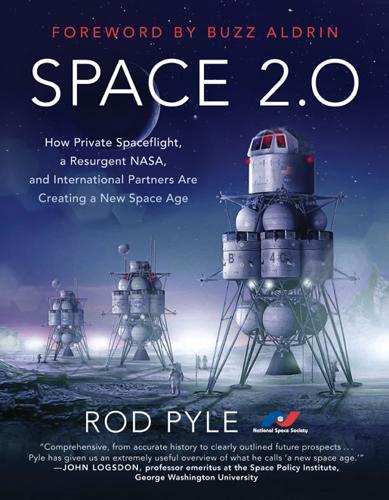
Space 2.0
by
Rod Pyle
Published 2 Jan 2019
—Geoffrey Notkin, member of the board of governors for the National Space Society and Emmy Award-winning host of Meteorite Men and STEM Journals “Space 2.0 is just the right book at just the right time. This important work not only provides a great historical background on space exploration, but more importantly, it highlights the next steps in the establishment of a deep space economy which includes, resource mining, additive manufacturing, infrastructure development, permanent habitation and eventually settlement. This is a must-read for anyone interested in the future of space exploration and development in the 21st century, and gives excellent suggestions about how you can get involved in Space 2.0.” —Daniel J. Rasky, PhD, chief of the Space Portal Office and senior scientist/engineer at the NASA Ames Research Center “A clear and enthusiastic account the current and future era in human spaceflight, concise and accurate, yet packed with information.
…
•Pilot Space Settlement: Blue Origin or SpaceX launch elements of a privately funded space colony to low Earth orbit for testing in 2028. They are then boosted to a Lagrange point for further assembly and testing. Habitation takes place in the mid-2020s with a crew of twelve people, to expand to twenty-four within two years. The company adds modules each year via on-orbit additive manufacturing, and the population grows, tripling annually. The overarching goal, regardless of who ultimately launches and finances such a facility, is to have a permanent human presence in cislunar space. The colony uses some degree of artificial gravity, probably induced by a rotating structure, as it is highly desirable for human health.

The Zero Marginal Cost Society: The Internet of Things, the Collaborative Commons, and the Eclipse of Capitalism
by
Jeremy Rifkin
Published 31 Mar 2014
Chapter 6 1. Mark Richardson and Bradley Haylock, “Designer/Maker: The Rise of Additive Manufacturing, Domestic-Scale: Production and the Possible Implications for the Automotive Industry,” Computer Aided Design and Applications (2012): 35. 2. Ashlee Vance, “3-D Printers: Make Whatever You Want,” Bloomberg Businessweek, April 26, 2012, http://www.businessweek.com/articles/2012-04-26/3d-printers-make-whatever-you-want (accessed August 23, 2013). 3. “Wohlers Associates Publishes 2012 Report on Additive Manufacturing and 3-D Printing: Industry Study Shows Annual Growth of Nearly 30%,” Wohlers Associates, May 15, 2012, http://wohlersassociates.com/press56.htm (accessed August 16, 2013). 4.
…
Three-dimensional printing, by contrast, is additive infofacturing. The software is directing the molten material to add layer upon layer, creating the product as a whole piece. Additive infofacturing uses one-tenth of the material of subtractive manufacturing, giving the 3D printer a substantial leg up in efficiency and productivity. In 2011, additive manufacturing enjoyed a blistering 29.4 percent growth, besting the 26.4 percent collective historical growth of the industry in just one year.3 Fourth, 3D printers can print their own spare parts without having to invest in expensive retooling and the time delays that go with it. With 3D printers, products can also be customized to create a single product or small batches designed to order, at minimum cost.

The Second Machine Age: Work, Progress, and Prosperity in a Time of Brilliant Technologies
by
Erik Brynjolfsson
and
Andrew McAfee
Published 20 Jan 2014
For the year, revenue is projected to roll in at $11.82 billion.39 Even computer peripherals like printers are getting in on the act, demonstrating useful capabilities that seem straight out of science fiction. Instead of just putting ink on paper, they are making complicated three-dimensional parts out of plastic, metal, and other materials. 3D printing, also sometimes called “additive manufacturing,” takes advantage of the way computer printers work: they deposit a very thin layer of material (ink, traditionally) on a base (paper) in a pattern determined by the computer. Innovators reasoned that there is nothing stopping printers from depositing layers one on top of the other. And instead of ink, printers can also deposit materials like liquid plastic that gets cured into a solid by ultraviolet light.
…
At the San Francisco headquarters of Autodesk, a leading design software company, we handled a working adjustable wrench that was printed as a single part, no assembly required.40 This wrench was a demonstration product made out of plastic, but 3D printing has expanded into metals as well. Autodesk CEO Carl Bass is part of the large and growing community of additive manufacturing hobbyists and tinkerers. During our tour of his company’s gallery, a showcase of all the products and projects enabled by Autodesk software, he showed us a beautiful metal bowl he designed on a computer and had printed out. The bowl had an elaborate lattice pattern on its sides. Bass said that he’d asked friends of his who were experienced in working with metal—sculptors, ironworkers, welders, and so on—how the bowl was made.
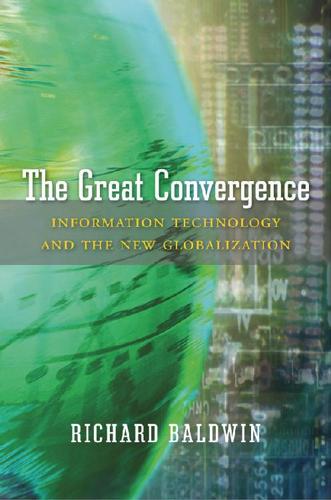
The Great Convergence: Information Technology and the New Globalization
by
Richard Baldwin
Published 14 Nov 2016
Since IT basically means automation, better IT disfavors specialization by reducing the cost of grouping many tasks into a single occupation. This happens in several ways. Today, many factories can be thought of as computer systems where the peripherals are industrial robots, computerized machine tools, and guided vehicles. Additive manufacturing (also known as 3D printing) is the extreme where IT allows a single worker to perform all tasks simply by operating one machine. Perhaps this type of advanced manufacturing should be called “compufacturing” since rather than machines helping workers make things, the workers are helping machines make things.
…
Mobile, always-on, virtual presence would be an extreme example of better communication technology that pushes firms toward an ever finer division of labor. A fascinating special report by The Economist in 2012 extrapolates these trends even further.2 It notes that manufacturing may be going through a new industrial revolution due to the advent of “3D printing” (also called additive manufacturing), which bundles virtually all stages of manufacturing into a single machine. Combined with the virtual designing made possible by computer-aided design systems, 3D printing would take manufacturing very close to the Star Trek replicators. While it seems more than a few years away, we are clearly moving toward a reality where “if I can imagine it, the computer can make it for me.”

The Stack: On Software and Sovereignty
by
Benjamin H. Bratton
Published 19 Feb 2016
Every time that the schematic instructions of physical object are downloaded and rendered into atoms, that transformation and the relevant information about who, what, where, when, how, and why that took place might be added to the cumulative “objectivity” of an object that is itself already a networked entity. Given the disruptive potential of a tectonic shift toward the economies of additive manufacturing, including the decentralization of the “industrial Internet,” the related control and governance issues are uncertain. They might range from the dangerously annoying (such as digital-rights management schemes for tangible objects crippled by remote rentier platforms attempting to collect royalties and fees on forks, lamps, and chairs)17 to the annoyingly dangerous (the widespread distribution of tools of mayhem, and new forms of virus spread through distributed object networks, either a real biological virus18 or physical malware or combinations thereof19).
…
We can imagine them mapping and acting on a specific culinary-agricultural assemblage that has been Addressed according to Bronze Age dietary conventions, located in multiple, even hostile, City-states, accessing a mix of several public Cloud applications as well as locally encrypted databases, sucking up an all-of-the-above stew of utility electrons. Or, an unnamed kid at a quasi-public 3D printing works in Lagos using two different open source additive manufacturing APIs, downloaded CAD scripts, and YouTube Uploader to spoof the Addresses of pirated bicycle cranks that will now phone home and report that they are actually licensed and operational in Cape Town, but which are really being used to haul bags of cement to the fourth floor of a building that shows up having only two floors on Google Earth RealTime (at least when queried from South African IPs) all running on the AfriNIC version of Google's “no carrier fee” Continent Cloud, sucking energy from a Franco-Chinese nuclear plant on the shores of Lake Chad, and chewing up circuitry minerals recycled from e-waste drone lifts from Bossangoa, Central African Republic, courtesy of All-African Defense Forces.
…
Bets are placed from both the right and the left that a “zero-marginal cost society” or “fully automated luxury communism” is built into the future of software-driven globalization. A party line that crosses parties emerges in different versions, blending nanotechnology, industrial robotics, additive manufacturing (3D printing), Internet of Things, digital replication, biotechnology, and open networks to draw a scenario in which many physical commodities are rationalized into downloadable streams, and much of the heavy lifting (and flying) will be done by intelligent quasi- or fully autonomous machines.
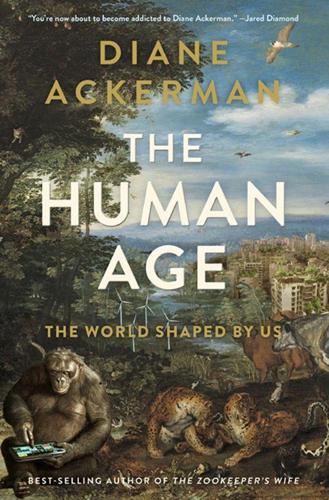
The Human Age: The World Shaped by Us
by
Diane Ackerman
Published 9 Sep 2014
It’s still a wildly useful method, if sloppy; it creates heaps of waste and leftovers, which means extracting even more raw materials from the earth. Also, mass-produced items, whether clothing or electronics, require a predicament of cheap labor to add the final touches. In contrast, there’s “additive manufacturing,” also known as 3D printing, a new way of making objects in which a special printer, given the digital blueprint for a physical item, can produce it in three dimensions. Solidly, in precise detail, many times, and with minimal overhead. The stuff of Star Trek “replicators” or wish-granting genies. 3D printing doesn’t cut or remove anything.
…
You can use your device’s search function to locate particular terms in the text. Page numbers beginning with 313 refer to notes. Absolicon, 99 acetylation, 281 acidification, 65, 66, 154 Adam (robot), 221 Adams, Ansel, 25 Adams, Lytle S. “Doc,” 145 adaptive radiation, 29 addiction, 176 additive manufacturing, see 3D printing Adélie penguins, 134–35 Aesop, 115 Afghanistan War, 258 African bees, 132 agriculture, 10, 11, 34, 71 big, 154 global warming and, 56 local, 88 as seen from air, 21 urban, 90 see also mariculture Alaska, 47–48, 132 algae, 10, 53, 61 Alien (film), 228 allergies, 301 alligators, 117, 134, 164 alliums, 125 Alps, 132 ALS, 285 alumroots, 80–81 Alzheimer’s, 271, 295 Amazon, 210 Amenhotep II, 257 amino acids, 179–80 Anatomage, 197 animals, in war, 141–48 Antarctic, 22 ice cores in, 9 Antarctica, 237 anteaters, 132 Anthropocene, 9 beginning of, 32–33 antibiotics, 300, 301 ants, 273 Apollo 17, 17–18 Appalachian Trail, 123–24 Apple, 210 Apps for Apes, 5–6, 28, 204 aquatic plants, 79 Arabian oryx, 132 archaea, 300 Archimedes, 220 architecture, 91–94 Archives of General Psychiatry, 300–1 Argentina, 72, 123, 132 Argus butterfly, 136 Arizona, 77 Arlanda, 99 Armstrong, Neil, 306 Army Corps of Engineers, 48 aromas, 294 artificial intelligence (AI), 210 artificial life (AL), 210 artificial limbs, 253 aseptic meningitis, 130 Ashton, Kevin, 230 Asia, 192 Assateague, 137–38 assembly line, 235 Assisted Human Reproduction Act, 266 asthma, 301 Atelier DNA, 103 Athaeneum Hotel, 84 Atlantic City, N.J., 46–47 atom bomb tests, 34 attention disorders, 196 Audi, 236 Audubon Society, 137 Australia, 43, 46, 77, 164–65, 175, 298–99 Australian Outback, 54 Austria, 124 autism, 176, 285, 302 autobiographical memory, 217 azacitidine, 285 Aztecs, 112 babies, 259 Backhouse, David, 144 bacteria, 181–83, 187, 289, 291, 300 Bacteroides fragilis, 302 baiji dolphins, 162 Ballard, J.
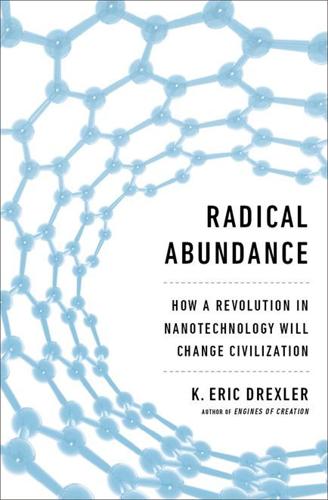
Radical Abundance: How a Revolution in Nanotechnology Will Change Civilization
by
K. Eric Drexler
Published 6 May 2013
It is telling that semiconductor fabrication facilities are huge, housing arrays of machines that can cost billions of dollars, while molecular fabrication today—with full atomic precision, beyond the reach of even high-resolution photolithography—is often done by university students using tools like pipettes and glass beakers. A Special Manufacturing Method: 3D Printing Another emerging method for manufacturing also breaks the pattern of making and then assembling parts: 3D printing, sometimes known as additive manufacturing. 3D printing differs from the traditional ways of shaping materials. Some traditional methods make a shape all at once using a costly, specialized tool, like a mold to shape plastic, a die to stamp steel, or an optical mask in semiconductor lithography. Other traditional methods carve shapes by removing small bits of material using general-purpose equipment like lathes, drills, and milling machines. 3D printing, by contrast, makes shapes by adding small bits of material using general-purpose machines guided by digital data files. 3D printing can make shapes beyond the reach of casting or carving.
…
Chapter 18: Changing Our Conversation About the Future 283the first response . . . often sets the direction for the next: This is an example of a “social cascade,” discussed (together with a range of other successes and pathologies of group decision-making) in Cass Sunstein’s brief and readable book, Infotopia: How Many Minds Produce Knowledge (Oxford, UK: Oxford University Press, 2006). INDEX Actin, 69 Additive manufacturing, 76–77 Agriculturalists, hunter-gatherers vs., 41–42 Agricultural Revolution, 39, 40–42 APM Revolution and, 50, 54 Industrial Revolution and, 44 nature and human impacts of, 54 Agriculture, atomically precise manufacturing and, 231–232, 248, 250 American Chemical Society, 181 Angewandte Chemie (journal), 20n APM.

Rise of the Robots: Technology and the Threat of a Jobless Future
by
Martin Ford
Published 4 May 2015
To illustrate how a similar phenomenon is likely to unfold on a much broader front, let’s look in a bit more depth at two specific technologies that have the potential to loom large in the future: 3D printing and autonomous cars. Both are poised to have a significant impact within the next decade or so, and could eventually unleash a dramatic transformation in both the job market and the overall economy. 3D Printing Three-dimensional printing, also known as additive manufacturing, employs a computer-controlled print head that fabricates solid objects by repeatedly depositing thin layers of material. This layer-by-layer construction method enables 3D printers to easily create objects with curves and hollows that might be difficult, or even impossible, to produce using traditional manufacturing techniques.
…
Brown, “A Looming Joblessness Crisis for New Pharmacy Graduates and the Implications It Holds for the Academy,” American Journal of Pharmacy Education 77, no. 5 (June 13, 2012): 90, http://www.ncbi.nlm.nih.gov/pmc/articles/PMC3687123/. CHAPTER 7 1. GE’s corporate website, https://www.ge.com/stories/additive-manufacturing. 2. American Airlines News Release: “American Becomes the First Major Commercial Carrier to Deploy Electronic Flight Bags Throughout Fleet and Discontinue Paper Revisions,” June 24, 2013, http://hub.aa.com/en/nr/pressrelease/american-airlines-completes-electronic-flight-bag-implementation. 3.

B Is for Bauhaus, Y Is for YouTube: Designing the Modern World From a to Z
by
Deyan Sudjic
Published 17 Feb 2015
And it is the changing idea of the relationship between perfection and imperfection that will define it. Philippe Starck is not a designer that the contemporary generation of design students shows much interest in. They look at Apple’s Jonathan Ive, or the more radical approach of open-source design. Hacking, additive manufacturing, as 3D printing is now called, and critical design make Starck look dated, if not irrelevant. For all his blithe claims to have been motivated by ecology long before green became fashionable, and still is, now that it is not, he is identified, if he is identified at all, with that moment in the 1980s when the cult of the designer celebrity was born.
…
The fact that there is any kind of prophylactic against malaria is an outcome of the wars that Britain and America fought in the mosquito-infested jungles of South East Asia. The internet is now a civilian system based on the planning for distributed military communications systems that could survive atomic warfare. Three-dimensional printing, or additive manufacturing, had some of its earliest deployment in the US navy, to provide emergency spare parts at sea for aircraft carriers. At the end of his long life, Mikhail Kalashnikov himself began to feel a sense of guilt and doubt about the malign impact of his design. His priest suggested to him that there was no shame in creating a weapon to defend the motherland.
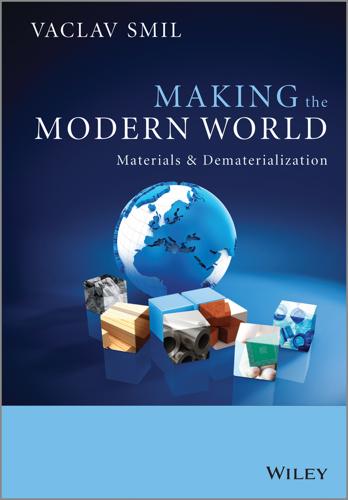
Making the Modern World: Materials and Dematerialization
by
Vaclav Smil
Published 16 Dec 2013
Allwood and Cullen (2012) estimate that light-weight design could reduce the mass of steel beams by 20–50%, that the savings could be as high as 30% for reinforcing bars and pipes and 40% for car bodies, and that in aggregate they could add up to as much as 100 Mt of steel, or nearly as much as the total pre-2008 US consumption. Additive manufacturing (three-dimensional printing) offers the least wasteful way to produce complex shapes with minimal waste (Gibson et al., 2010; Gebbhardt, 2012). Longer product life is another obvious material-sparing option, but some of the greatest rewards could come from reducing yield losses and diverting manufacturing scrap.
…
GHK (2006) A Study to Examine the Benefits of the End of Life Vehicles Directive and the Costs and Benefits of a Revision of the 2015 Targets for Recycling, Re-Use and Recovery Under the ELV Directive, http://ec.europa.eu/environment/waste/pdf/study/final_report.pdf (accessed 23 May 2013). Gibson, I., Rosen, D.W. and Stucker, B. (2010) Additive Manufacturing Technologies: Rapid Prototyping to Direct Digital Manufacturing, Springer, New York. Giljum, S., C. Lutz, A. Jungnitz et al. 2008. Global Dimensions of European Natural Resource Use. Vienna: Sustainable Europe Research Institute, http://seri.at/wp-content/uploads/2009/08/SERI-Working-Paper-7.pdf (accessed 23 May 2013).

The Future Is Faster Than You Think: How Converging Technologies Are Transforming Business, Industries, and Our Lives
by
Peter H. Diamandis
and
Steven Kotler
Published 28 Jan 2020
prosthetic limbs: For a database with examples of 3-D printed prosthetics, see: “3-D-Printable Prosthetic Devices,” National Institutes of Health, https://3-Dprint.nih.gov/collections/prosthetics. $12 trillion manufacturing sector: Eric Gjovik, “Additive Manufacturing and Its Impact on a $12 Trillion Industry,” May 14, 2019. See: https://www.manufacturing.net/2019/05/additive-manufacturing-and-its-impact-12-trillion-industry. Until the early 2000s, 3-D printers were exceptionally pricey: Blake Griffin, “New Report Shows Manufacturing Output Hit $35 Trillion in 2017,” Interact Analysis. See: https://www.interactanalysis.com/new-report-shows-manufacturing-output-hit-35-trillion-in-2017-growth-forecast-to-continue/.
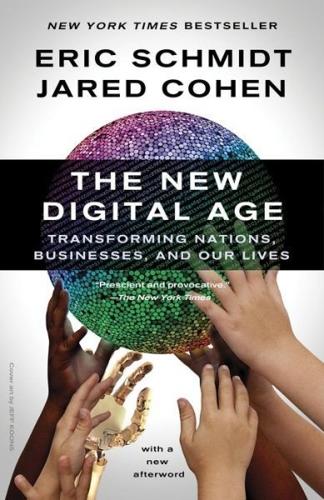
The New Digital Age: Transforming Nations, Businesses, and Our Lives
by
Eric Schmidt
and
Jared Cohen
Published 22 Apr 2013
Even if the prices for sophisticated smart phones and robots to perform household tasks like vacuuming remain high, illicit markets like China’s expansive “shanzhai” network for knock-off consumer electronics will produce and distribute imitations that bridge the gap. And technologies that emerged in first-world contexts will find renewed purpose in developing countries. In “additive manufacturing,” or 3-D printing, machines can actually “print” physical objects by taking three-dimensional data about an object and tracing the contours of its shape, ultra-thin layer by ultra-thin layer, with liquid plastic or other material, until the whole object materializes. Such printers have produced a huge range of objects, including customized mobile phones, machine parts and a full-sized replica motorcycle.
…
seven billion online: “U.S. & World Population Clocks,” U.S. Cesus Bureau, accessed October 26, 2012, http://www.census.gov/main/www/popclock.html. INDEX Aadhaar Abbottabad, Pakistan, 2.1, 5.1 Abkhaz nationalists Abuja, Nigeria Academi, LLC accountability, 2.1, 4.1, 6.1, 7.1 activist groups additive manufacturing Advanced Research Projects Agency (ARPA), n Afghanistan, 1.1, 4.1, 5.1, 5.2, 5.3, 6.1, 6.2, 7.1 reconstruction of, 7.1, 7.2, 7.3 Africa, 3.1, 4.1, 4.2 African Americans African National Congress (ANC) African Sahel African Union Age of Spiritual Machines, The: When Computers Exceed Human Intelligence (Kurzweil), con.1 Agha-Soltan, Neda Agie, Mullah Akbar Agreement on Trade-Related Aspects of Intellectual Property Rights (1994) Ahmadinejad, Mahmoud al-Aqsa Martyrs Brigades al-Assad, Bashar Alcatel-Lucent AlertNet Algeria, 3.1, 4.1 alienation Al Jazeera al-Qaeda, 5.1, 5.2, 5.3, 5.4, 5.5, con.1 al-Shabaab, 2.1, 5.1, 7.1, 7.2 Amazon, itr.1, 1.1, 1.2 data safeguarded by Amazon Web Services American Sentinel drone Android anonymity, 2.1, 3.1, 4.1 Anonymous, 5.1, 5.2 Anti-Ballistic Missile Treaty antiradicalization antiterrorism units, 5.1, 5.2, 5.3, 5.4 Apple, itr.1, 5.1 data safeguarded by apps, 2.1, 5.1 Arab Spring, itr.1, 4.1, 4.2, 4.3, 4.4, 4.5 AR.Drone quadricopter Argentina Armenia arms-for-minerals trade arrests artificial intelligence (AI), itr.1, 1.1 artificial pacemakers Asia Asia-Pacific Economic Cooperation (APEC) Assange, Julian, 2.1, 2.2, 2.3, 2.4, 5.1 Astroturfing Atatürk, Mustafa Kemal, 3.1, 3.2 Athar, Sohaib, n, 269 ATMs augmented reality (AR), itr.1, 2.1 autocracies, 2.1, 3.1, 3.2 data revolution in dissent in information shared by online discussions in Ayalon, Danny Baghdad Baghdad Museum Bahrain Baidu.com, n Bamiyan Buddhas Bangladesh bank loans Basque separatists Batbold, Sukhbaatar battery life Bechtel Belarus Belgium Ben Ali, Zine el-Abidine, 4.1, 4.2 Berezovsky, Boris Better Angels of Our Nature, The (Pinker), 6.1 big data challenge Bill of Guarantees bin Laden, Osama, 2.1, 5.1, 5.2, 6.1, nts.1 biometric information, 2.1, 2.2, 6.1, 6.2, 6.3 Bitcoin, 2.1, nts.1 BlackBerry Messenger (BBM), 2.1, 2.2, 4.1, 5.1 Black Hat Blackwater Blockbuster, n Bloomberg News Bluetooth, 2.1, 2.2, 6.1 body scan body temperatures Boko Haram Bosnia brand Brand, Stewart, n Brazil, 5.1, 5.2, 5.3 Bush, George H.
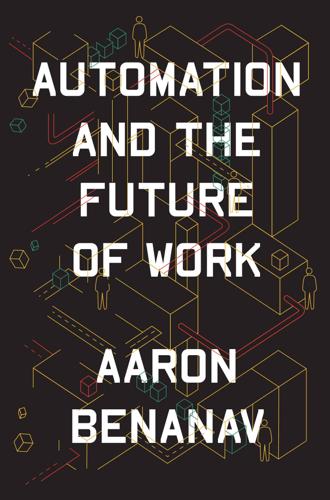
Automation and the Future of Work
by
Aaron Benanav
Published 3 Nov 2020
As the US responded to heightened import penetration in the early 1970s by breaking up the Bretton Woods order and devaluing the dollar—which increased US firms’ international competitiveness—these same problems spread from North America and northwestern Europe to the rest of the European continent and Japan.32 Intensifying competition among firms in these high-income regions did not dissuade more countries from building up manufacturing capacity, adopting export-led growth strategies, and entering global markets for manufactured goods. As additional manufacturing capacity appeared and entered the fray of international competition, falling rates of manufacturing-output growth and consequent labor deindustrialization spread to more regions: Latin America, the Middle East, Asia, and Africa, as well as to the global economy taken as a whole. Deindustrialization came to most global South regions in the aftermath of the 1982 Third World debt crisis, amid the imposition of IMF-led structural adjustment programs.

Uncontrolled Spread: Why COVID-19 Crushed Us and How We Can Defeat the Next Pandemic
by
Scott Gottlieb
Published 20 Sep 2021
It turned out that much of the country’s supply came from a single manufacturing site. That’s not the case anymore, but back then, we were worried about the risk that a deliberate attack on that site could disrupt the majority of the nation’s insulin supply. So the FDA worked closely with the drug manufacturer to help support the company in its efforts to build an additional manufacturing facility. But that work to build redundant manufacturing sites for key medicines was a limited affair, and ultimately, attention faded and the production of a lot of critical medicines became geographically consolidated again. A week after Hurricane Maria, I traveled to Puerto Rico and visited with our FDA staff on the island.
…
Like the volume to surge the supply of testing, we needed to have biological manufacturing facilities that were deliberately overbuilt so there was reserve capacity ready to be tapped in the event of a crisis. We learned some lessons from our past experience, where we attempted to invest in the additional manufacturing capacity that we would need if a flu pandemic ever struck, only to see those efforts abandoned or lose their focus when the immediate threat seemed to subside. Many of these efforts had sprung from the planning that began in 2005 following concerns about the spread of the H5N1 bird flu. On the campus of Texas A&M University we established a facility to manufacture biologicals in cell cultures and then “finish” them—transferring them into vials ready for distribution to patients.

Future Politics: Living Together in a World Transformed by Tech
by
Jamie Susskind
Published 3 Sep 2018
Researchers at Delft University in the Netherlands have created an ‘atomic hard drive’ capable of storing 500 terabits of information in a single square inch. Put another way, it could store the entire contents of the US Library of Congress in a cube measuring 0.1 mm each way.105 Another constitutive technology is 3D printing, also known as additive manufacturing. It enables us to print physical things from digital designs. Some think it could herald an era of ‘desktop manufacturing’ in which many people have 3D printers in their home or office and can ‘print’ a wide range of objects.106 Or municipal 3D printers could allow people to print what they need using opensource online digital templates.107 So far, some of the most useful 3D-printed objects have been in medicine.
…
OUP CORRECTED PROOF – FINAL, 28/05/18, SPi РЕЛИЗ ПОДГОТОВИЛА ГРУППА "What's News" VK.COM/WSNWS OUP CORRECTED PROOF – FINAL, 28/05/18, SPi РЕЛИЗ ПОДГОТОВИЛА ГРУППА "What's News" VK.COM/WSNWS IN DE X 3D printing 56–7, 178, 329 4D printing 57 Ackerman, Spencer 396 acquisitions by tech firms 318–19 action, freedom of 164–5, 166–7, 184 digital liberation 169 predictive systems 176 adaptive law 107–10 additive manufacturing (3D printing) 56–7, 178, 329 Affectiva.com 382 affective computing 52–3, 229 affirmative action 261, 268, 292 affordances 169–71 Afghanistan 50 Agoravoting.com 415 Agüera y Arcas, Blaise 172, 403 AI see Artificial Intelligence Airbnb Decentralised Autonomous Organisations 47 guest acceptance/rejection 290 individual responsibility 346 reputation system 289–90 sharing economy 335, 336 Taiwan 234 airport security systems 120–1, 186 Ajunwa, Ifeoma 418 Aletras, Nicolaos 372, 393 algorithmic audit 355–6 algorithmic injustice 279–94 data-based 282 discrimination 281–2 neutrality fallacy 288–92 rough and ready test 280–1 rule-based 283–8 well-coded society 292–4 algorithms 266 and code 94–5 and distribution 266–70, 278 and information 268–9 and participation 268 and price 269–70 of recognition 260, 275–8 scrutiny 132–3 Al-Khwār izmī, Abd’Abdallah Muhammad ibn Mūsā 94 Allen, Colin 393, 394 Allen, Jonathan P. 336, 417, 419, 429, 430, 431 Alphabet 318, 319, 320 altruism, limited 365 Amazon acquisitions 318, 319 Alexa 293 book recommendations 66, 147 commons 332 concentration of tech industry 318, 320 ‘cyber’ and ‘real’ distinction, disappearance of 97 Echo 134, 135 Kindle 151 machine learning 35 order refusal 106 robots 54 rules 116 working conditions 310 ambient intelligence see smart devices OUP CORRECTED PROOF – FINAL, 28/05/18, SPi РЕЛИЗ ПОДГОТОВИЛА ГРУППА "What's News" VK.COM/WSNWS 492 Index American Legal Realism 109 Amnesty International 148 amyotrophic lateral sclerosis (ALS) 32 Anderson, Berit 410 Anderson, Elizabeth 118, 394, 401, 418, 420, 426, 429 Amazon’s working conditions 310 justice in recognition 273 Android 64, 359 Angelidou, Margarita 381 Anglican Church 159 anonymity 231–2 Anonymous ‘hacktivists’ 221 antitrust law 357, 358 Anwin, Julia 403, 422 apathy 349 Apollo Guidance Computer 38 Apple acquisitions 318 concentration of tech industry 320 founders 314 Guidelines for app developers 189 gun emoji 148 homosexuality ‘cure’ apps 235–6 inflexibility of operating system 359 iPad 38 manufacturers’ working conditions 151 refusal to unlock iPhone of San Bernadino terrorist 155 Siri 37, 47, 293 taxation 328 ‘Think Different’ advertisement 6 watches 44 Aquinas, Thomas 215, 409 AR see augmented reality Arab Spring 150, 221 Arbesman, Samuel 193, 406 arbitrariness, rule-based injustice 284 Arendt, Hannah 9, 72, 163, 237, 415 Aristotle 368, 403, 411, 418 democracy 215, 222, 224, 234, 249 justice and equality 259 man as a political animal 222 morality 176 objective failures of recognition 272 political theory 9 work paradigm 300–1 Armstrong, Neil 38 Arneson, Richard 308, 425, 426 Aron, Jacob 376 artificial emotional intelligence 53 artificial general intelligence 33 Artificial Intelligence (AI) 30–7 affective computing 53 AI Democracy 212, 213, 250–4, 348 algorithmic injustice 293 automation of force 119, 120 blockchain 47 bots see bots commons 332 Data Deal 337 data’s economic importance 317 degradation argument 361 Deliberative Democracy 232 digital law 108–9, 110, 113 Direct Democracy 240 facial recognition 66 future of code 98 increasingly quantified society 61 machine vision 51 perception-control 149 political campaigning 220 political speeches 31, 360–1 post-politics 362, 365–6 predictions 173 privatization of force 116 smart devices 48 software engineers 194 staff scrutiny 267 superintelligence 365–6 totalitarianism 177 usufructuary rights 330 Wealth Cyclone 322 Wiki Democracy 245 Asimov, Isaac 198 Assael,Yannis M. 371 Asscher, Lodewijk F. 400, 408 Associated Press 30 AT&T 20 OUP CORRECTED PROOF – FINAL, 28/05/18, SPi РЕЛИЗ ПОДГОТОВИЛА ГРУППА "What's News" VK.COM/WSNWS Index Athens, classical 212, 214–15, 217, 222–3, 224, 228, 232 audit, algorithmic 355–6 augmented reality (AR) 58–9 mixed reality 60 perception-control 146, 149, 151–2, 229, 278 scrutiny 135 augmented things see smart devices Austria 235 authoritarianism 177–9 cryptography 183 state ownership of capital 329 authority 93 automated number plate recognition technology 49–50 automation of force 100, 119–21 autonomy 165, 167 Autor, David 428 Avent, Ryan 424, 425, 427 Azuma, Hiroki 247, 416 Babylon 77, 324 Bachrach, Peter 389, 391, 398 backgammon 31 Bailenson, Jeremy 407 Baker, Paul 422 Ball, James 428 Ball, Terence 368, 389 Baraniuk, Chris 432 Baratz, Morton S. 389, 391, 398 Barr, Alistair 421 Bartky, Sandra 126, 395 Bartlett, Jamie 388, 413, 417 Bates, James 134, 135 Baughman, Shawnee 407 BBC 373, 379, 381, 385, 405 Belamaire, Jordan 386 Belgium 129 Beniger, Andrew J. 369, 389 Benkler,Yochai 368, 370, 378, 398, 399, 400, 412, 416, 431 cooperative behaviour 45 networked information environment 145 smartphones 146 493 Bentham, Jeremy 126, 195 Berkman Center for Internet and Society 184, 405 Berlin, Isaiah 9, 166, 195, 368, 401, 403, 407 Berman, Robby 382, 384 Bernays, Edward L. 410 Berners-Lee, Tim 7, 48, 294, 367, 380 Bess, Michael 402, 434 Bhavani, R. 382 Bible 100, 124, 142, 257, 300, 317 BI Intelligence 428 Bimber, Bruce 369, 412 biometric analysis 52–3, 131, 186 Bitcoin 8, 46 Black Mirror 140 Blake, William 390 blockchain 45–7 automation of force 120 justice 264 smart contracts 106, 119 usufructuary rights 330 voting 240 Blue Brain project 33, 373 Bluetooth 48, 136 Bobbit, Philip 279 Boden, Margaret A. 373–4, 381, 382, 383 Bogle, Ariel 385 Boixo, Sergio 375–6 Bollen, Johan 416 Bolukbasi, Tolga 423 bomb-detecting spinach 51 Bonchi, Francesco 422 Booth, Robert 399 Borges, Jorge Luis 53 Bostrom, Nick 365–6, 372, 373, 379, 381, 382, 435 bots Deliberative Democracy 232–4, 235 network effect 321 Bourzac, Katherine 377 Boyle, James 331, 333, 430–1 Brabham, Daren C. 416 OUP CORRECTED PROOF – FINAL, 28/05/18, SPi РЕЛИЗ ПОДГОТОВИЛА ГРУППА "What's News" VK.COM/WSNWS 494 Index Bradbury, Danny 415 brain–computer interfaces 48, 169 Braithwaite, John 431 Braman, Sandra 389 Brazil 244 Brexit 4, 233, 239 Bridge, Mark 393 Bridgewater Associates 267 British Empire 18 British Library 66 Brown, Gordon 95, 96, 391 Brownsword, Roger 176, 403 Brynjolfsson, Erik 374, 382, 390, 393, 427, 431 capital 315, 316, 334 Burgess, Matt 379 Burke, Edmund 263 Byford, Sam 32 Byrnes, Nanette 392 Cadwalladr, Carole 410, 413 Calabresi, Guido 279 Cambridge Analytica 220 campaigning, political 219–20 Campbell, Peter 371 Canetti, Elias 29 capital 314–17 commons 331–4 sharing economy 335–6 state ownership 329–30 taxation 327–9 usufructuary rights 330–1 carbon nanotubes 40 Casanova, Giacomo 216, 409 Casey, Anthony J. 109, 112, 393, 394 Castells, Manuel 144, 394, 398 Castillo, Carlos 422 CBC 383 Cellan-Jones, Rory 371 censorship by Anglican Church 159 perception-control 143, 146, 148, 151, 156 private power 190 cerebral hygiene 170 CERN 65 Chan, Connie 428 charisma 349 Charles I, King 167–8 chatbots 30 checkers 31 Cheney-Lippold, John 132, 395 chess 31, 36 Chesterton, G.

You Are Not a Gadget
by
Jaron Lanier
Published 12 Jan 2010
Songles for opera or fine jazz would be made by craftsmen from fine materials in much more limited editions. They would be expensive. Low-end songles would be manufactured by the same channel that provides toys. An increasing number of consumer items that might become songles these days have radio-frequency identification anyway, so there would be no additional manufacturing expense. Expensive limited-edition songles would probably accompany the introduction of new forms of pop music—in parallel with cheap large-volume editions—because there would be a fabulous market for them. Formal Financial Expression* Unlike the previous two sections, this one addresses the problems of the lords of the clouds, not the peasants.

Democratizing innovation
by
Eric von Hippel
Published 1 Apr 2005
Pyramiding was made into a practical industrial process by Mary Sonnack, a Division Scientist at 3M, and Joan Churchill, a psychologist specializing in the development of industrial training programs. 136 Chapter 10 Identifying Lead Users in Target Markets In general it is easier to identify users at the leading edge of target markets than it is to identify users in advanced analog fields. Screening for users with lead user characteristics can be used. When the desired type of lead user is so rare as to make screening impractical—often the case—pyramiding can be applied. In addition, manufacturers can take advantage of the fact that users at the leading edge of a target market often congregate at specialized sites or events that manufacturers can readily identify. At such sites, users may freely reveal what they have done and may learn from others about how to improve their own practices still further.

The Economic Singularity: Artificial Intelligence and the Death of Capitalism
by
Calum Chace
Published 17 Jul 2016
Many jobs involving manual dexterity or the ability to traverse un-mapped territory are currently hard to automate. But as we will see in the next section, that is changing fast. Tipping points and exponentials New technologies sometimes lurk for years or even decades before they are widely adopted. 3D printing (also known as additive manufacturing[cxxxi]) has been around since the early 1980s but is only now coming to general attention. Fax machines, surprisingly, were first patented in 1843, some 33 years before the invention of the telephone.[cxxxii] Sometimes the delay happens because there is at first no obvious application for the inventions or discoveries.

Cogs and Monsters: What Economics Is, and What It Should Be
by
Diane Coyle
Published 11 Oct 2021
The scope of the changes the world has seen ranges from the automation of manufacturing from the 1980s on, and the waves of outsourcing and offshoring, to Tim Berners-Lee’s 1989 invention of the Web, to the 2007 confluence of smartphones, 3G/4G, and algorithms that have us all online, everywhere, always. Global production chains, e-commerce, social media, digital platforms, are all made possible by the technological and business innovations. And there is more to come as AI advances, and merges with other areas of innovation such as genomics, additive manufacturing, green energy and transport transition, or advanced materials. Chapter Five described the economic characteristics of the technology. What have these implied in practice? By 2020 Apple’s market capitalisation alone exceeded that of the combined 20 largest German manufacturing firms such as Siemens and BMW.2 The world of production (Storper and Salais 1997) has been completely reorganised, and to some extent uprooted from specific geographies (Coyle 1997; Coyle and Nguyen 2019; Haskel and Westlake 2018).

The Switch: How Solar, Storage and New Tech Means Cheap Power for All
by
Chris Goodall
Published 6 Jul 2016
This is a highly regarded company in the industry. David started by saying that all the many different types of battery necessarily involve compromises between a large number of different characteristics such as weight, volume, safety, the voltage provided, recharging times and cost. In addition, manufacturers need to keep in mind how fast the battery loses its charge when not being used and how many times it can be successively charged and discharged before it begins to lose its capacity to accept energy. There is no single right answer to the question ‘Which type of battery is best?’ He told me that lithium sulphur batteries sit at ‘a position of high energy to weight, lowish cost per kilowatt hour, poorish energy to volume and a good capacity for thousands of charge/discharge cycles’.
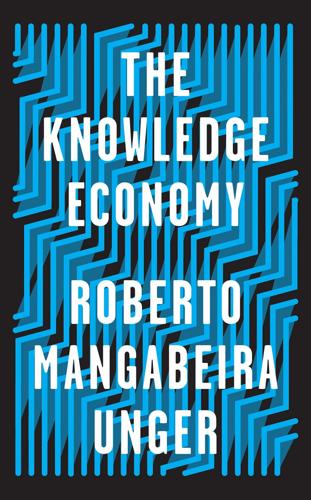
The Knowledge Economy
by
Roberto Mangabeira Unger
Published 19 Mar 2019
Or they can form part of a cumulative and consequential change in the organization of work and ultimately in the regime of property. Thus, both the expression and the development of these more superficial features of the productive practice depend on the progress of the deeper characteristics that I later discuss. Additive manufacturing (3D printers), robotics, and, more generally, flexible, numerically controlled machine tools make it possible to diversify products, exploring their possible variants, while combining such prodigal diversification with scale of production. The technological facility would amount to little if it failed to mobilize and develop a range of capabilities that shorten the distance between productive activity and experimental science.
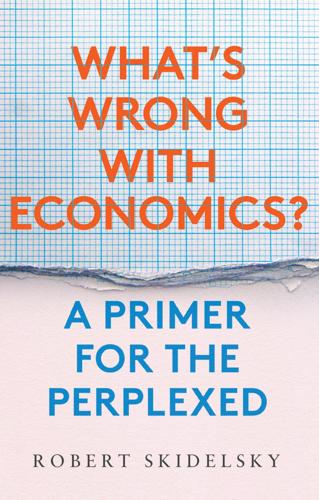
What's Wrong With Economics: A Primer for the Perplexed
by
Robert Skidelsky
Published 3 Mar 2020
This is because the prices of primary products, in which poor countries specialised, were set in competitive markets, whereas the manufactured goods of developed countries were priced in monopolistic markets. Poor countries are subject to declining terms of trade, equivalent to transfers of income from the poor to the rich world. In addition, manufacturing industries have a permanent cost advantage, because technical change benefits them more than primary producers.11 So Prebisch and his followers demanded that the state institute policies of import substitution to improve developing countries’ terms of trade. Under cover of protection, the state would shift resources out of agriculture, subject to diminishing returns, and low-productivity services where ‘disguised unemployment’ was rampant, to higher-productivity manufacturing industries, which enjoyed ‘economies of scale’.

The Four: How Amazon, Apple, Facebook, and Google Divided and Conquered the World
by
Scott Galloway
Published 2 Oct 2017
The era also saw a new generation of retail infrastructure technology, including the first barcode scanner, installed in a Kroger in 1967.29 Until the sixties there were laws against retailers offering discounts for bulk purchases. Lawmakers correctly feared this would put thousands of local stores out of business. In addition, manufacturers’ brands typically set the prices retailers were allowed to charge for their products. As a result, discounting was a limited and dull-edged weapon. For various reasons, including falling margins and growing competition, those gloves came off in the sixties, and the great “Race to Zero” began.
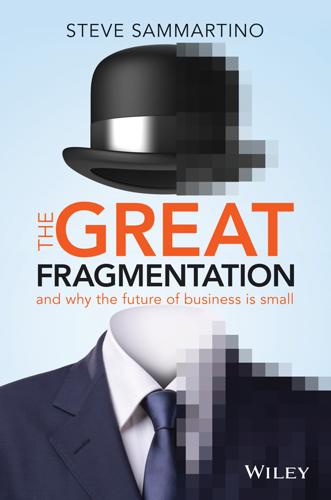
The Great Fragmentation: And Why the Future of All Business Is Small
by
Steve Sammartino
Published 25 Jun 2014
What it means for business If you make, you must sell. The power lies with those who have a direct connection with their buyers or audience. CHAPTER 10 Bigger than the internet: 3D printing I’ve been mildly obsessed with 3D printing since I first learned about it. Also referred to as ‘additive manufacturing’ or ‘digital fabrication’, it’s a process where a three-dimensional, solid object is created by placing down successive layers of material fused together by laser (digital light processing) and a multitude of other methods that are evolving rapidly, almost daily. Most people have now seen some footage of one of these printers in action, probably printing a useless plastic widget or a gun.
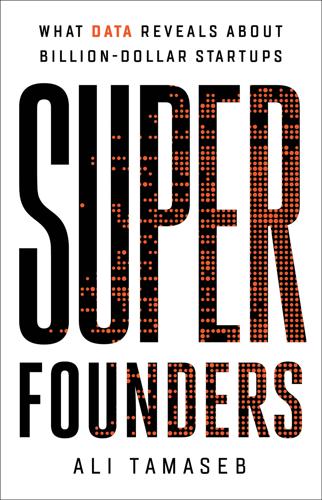
Super Founders: What Data Reveals About Billion-Dollar Startups
by
Ali Tamaseb
Published 14 Sep 2021
ByteDance, one of the highest-valued privately-owned startups in the world at the time of writing this book and the famous Chinese company behind the video-sharing app TikTok and the content-aggregation platform Toutiao, was started by a solo founder, Zhang Yiming. Ric Fulop didn’t have a single co-founder when he started Desktop Metal—he had six of them. Desktop Metal pioneered the field of additive manufacturing. Its 3D printers print objects from metal powder, a useful process for prototyping or testing metal parts before machining them in high volumes. Fulop’s co-founders brought a mix of expertise to the project; one of them, Ely Sachs, had invented binder jet printing, the technology on which Desktop Metal was built.

Mysteries of the Mall: And Other Essays
by
Witold Rybczynski
Published 7 Sep 2015
There is some indication that the museum construction bubble, at least, has burst: recently, several high-profile museum projects in New York, Los Angeles, and San Francisco were either canceled or put on indefinite hold. In their heyday, manufacturing cities specialized: Philadelphia was a textile center, Detroit made cars, Milwaukee brewed beer. Today’s recreational cities offer essentially the same product; hence they compete fiercely for the same shrinking tourist dollars and euros. In addition, manufacturing fun has turned out to be more complicated than manufacturing carpets. Consumers have always been fickle, but global tourists are also highly mobile. They want to be constantly entertained, diverted, and enthralled, and they are easily beguiled by the next new fad. If one city begins to look faded and shopworn, there are plenty of others that beckon.

The Age of Stagnation: Why Perpetual Growth Is Unattainable and the Global Economy Is in Peril
by
Satyajit Das
Published 9 Feb 2016
Robots designed for aged and healthcare are attracting interest. Despite advances, they remain restricted in terms of power source, locomotion, manipulation, and sensory perception, limiting their use for non-routine tasks. Robots have had difficulty completing simple human tasks such as sorting laundry. First suggested twenty years ago, 3D or additive manufacturing is a process in which successive layers of material are placed under computer control to create three-dimensional objects. It may prove to be a valuable niche industry, reducing the cost of manufacturing single or small-run items where there are no economies of scale. Technology is also a source of problems.
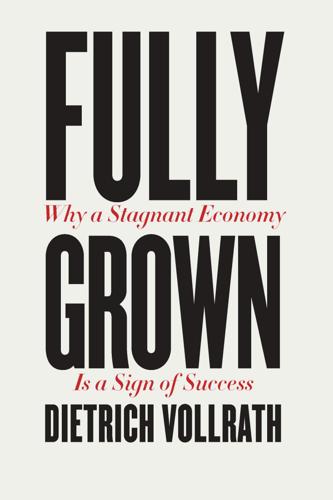
Fully Grown: Why a Stagnant Economy Is a Sign of Success
by
Dietrich Vollrath
Published 6 Jan 2020
With our assumption of extra manufacturing workers producing extra GDP, the value-added share could rise all the way to 13.4%. As we saw in chapter 7 as well, because manufacturing has higher productivity growth than the average industry, at about 1.36%, a bigger value-added share for manufacturing would increase productivity growth. The additional manufacturing workers would raise it by 0.016% (.0136 times the difference between the shares 0.134 and 0.122). Now, to be thorough, we’d also have to account for the fact that productivity growth would fall by a little because the remainder of the economy had a lower value-added share. But again, let’s keep things optimistic and ignore this.

Free Money for All: A Basic Income Guarantee Solution for the Twenty-First Century
by
Mark Walker
Published 29 Nov 2015
Optimists like Ray Kurzweil think it could be somewhere in the order of 2030 to 2040.26 Whether this is accurate or whether Kurzweil is off by half a century or more is not something we can investigate here. Rather, I would like to make a few points to show that it is not pure fantasy. The first point is that a precursor technology, 3-D printing, or additive manufacturing, is already in use and rapidly expanding. For those not familiar with the technology, the analogy with a regular printer for printing documents is perhaps most helpful. Think about how inkjet printers put words on a page. A computer program controls an inkjet that deposits tiny amounts of ink according to patterns of letters and symbols.
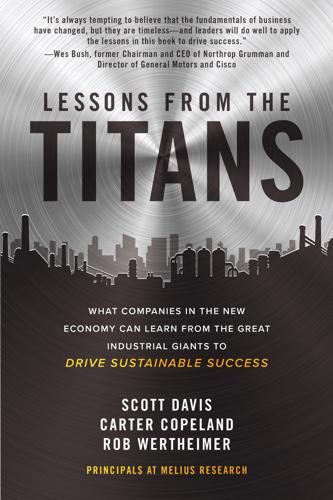
Lessons from the Titans: What Companies in the New Economy Can Learn from the Great Industrial Giants to Drive Sustainable Success
by
Scott Davis
,
Carter Copeland
and
Rob Wertheimer
Published 13 Jul 2020
But as he reduced the company’s exposure to financial services, he needed something to replace the lost earnings. He settled on two big initiatives: digital transformation and the acquisition of a large French power infrastructure company named Alstom. With digital, Immelt saw enormous potential in the industrial internet and additive manufacturing (also known as 3D printing), and he wanted to supply the software as well as the hardware. He turned the company’s small IT support unit into a separate GE Digital division. It had the ambition and budget to become a world-class software house. The digital foray won the company good press, but it would be many years of heavy investment before anything tangible emerged, and even then, finding new revenues was difficult.

Augmented: Life in the Smart Lane
by
Brett King
Published 5 May 2016
Examples of metamaterials emerging include: • an invisibility cloak (or surface material) that diverts visible light or microwaves around an object coated in the material • bioinspired, self-actuated materials or electroactive polymers that behave like human muscle • coatings that can conduct electricity or can turn any surface into a display • clothing or textiles that will generate an electrical charge or include sensors and other circuits embedded in the weave • carbon-nanofibre or diamond-nanofibre tethers which could be used to construct space lifts or similar • super-strong and super-light metals and composites that can be grown like a tree or cultured in a vat • windows that have transparent, embedded solar photovoltaics (PV) so that they can generate electricity 3D printing allows you to download almost any design for any product and print it in real time. The main 3D printing method is also known as “additive manufacturing” due to the build process that adds or extrudes a layer of material millimetres at a time to gradually create a three-dimensional object or design. Future 3D printers will be able to print clothing or include electronic circuits and displays in designs. In July 2015, the astronauts on the International Space Station downloaded a “wrench” and printed it using a specially designed 3D printer.

Stakeholder Capitalism: A Global Economy That Works for Progress, People and Planet
by
Klaus Schwab
Published 7 Jan 2021
Impressive progress has been made in AI in recent years, driven by exponential increases in computing power and by the availability of vast amounts of data, from software used to discover new drugs to algorithms used to predict our cultural interests. Digital fabrication technologies, meanwhile, are interacting with the biological world on a daily basis. Engineers, designers, and architects are combining computational design, additive manufacturing, materials engineering, and synthetic biology to pioneer a symbiosis between microorganisms, our bodies, the products we consume, and even the buildings we inhabit.58 The technologies of the Fourth Industrial Revolution once again have the possibility to greatly enhance global wealth.

Stakeholder Capitalism: A Global Economy That Works for Progress, People and Planet
by
Klaus Schwab
and
Peter Vanham
Published 27 Jan 2021
Impressive progress has been made in AI in recent years, driven by exponential increases in computing power and by the availability of vast amounts of data, from software used to discover new drugs to algorithms used to predict our cultural interests. Digital fabrication technologies, meanwhile, are interacting with the biological world on a daily basis. Engineers, designers, and architects are combining computational design, additive manufacturing, materials engineering, and synthetic biology to pioneer a symbiosis between microorganisms, our bodies, the products we consume, and even the buildings we inhabit.58 The technologies of the Fourth Industrial Revolution once again have the possibility to greatly enhance global wealth.
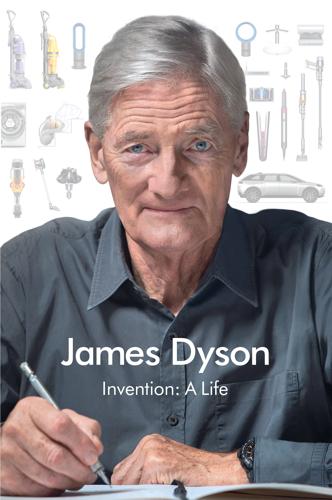
Invention: A Life
by
James Dyson
Published 6 Sep 2021
What you say should be true to who you are. Selling in a market as large as the U.S., however, required a significant increase in manufacturing capacity. In 2000, we made 800,000 vacuum cleaners and washing machines, but in doing so we had completely run out of assembly space to expand into and additional manufacturing staff at Malmesbury, where unemployment was very low. Desperately short of local labor, we had to bus people in from afar. More importantly, all our suppliers of plastics, components, and electronics were in Southeast Asia, while along with Australia and Japan, our fastest-growing markets were there, too.

The Measure of Progress: Counting What Really Matters
by
Diane Coyle
Published 15 Apr 2025
There is research suggesting people are happier if prevented from using social media (Allcott et al. 2020). And yet there is also a vast amount of innovation taking place, in digital (generative AI, robotics), in materials science (nanotechnologies, composites), in biomedicine (mRNA, genomics, biomarkers), and in manufacturing processes (additive manufacturing, biomanufacturing), as well as rapid declines in the costs of renewables generation, potentially paving the way for a switch away from the fossil fuel energy system. Some of these may be in their early stages of deployment but w ill eventually have a large economic impact; others may simply be difficult to measure.

The End of Power: From Boardrooms to Battlefields and Churches to States, Why Being in Charge Isn’t What It Used to Be
by
Moises Naim
Published 5 Mar 2013
There are no transaction costs, just the costs of inputs, and all firms have access to the same information. Perfect competition describes an environment in which no single firm can influence on its own the price of goods in its marketplace. The reality is very different, of course. Two companies, Airbus and Boeing, command the market for big long-haul planes, and a small number of additional manufacturers make smaller jets. But innumerable companies manufacture shirts or socks. It is exceedingly difficult for a new aircraft maker to enter the market. Assemble a few tailors or seamstresses in a workshop, however, and you can produce shirts. A small new shirtmaker may be able to compete with the big names, or at least find a niche in which it can prosper.

The Ultimate Engineer: The Remarkable Life of NASA's Visionary Leader George M. Low
by
Richard Jurek
Published 2 Dec 2019
Truly, former shuttle astronaut and NASA administrator at the time, said in the agency’s announcement, “George Low represented quality and excellence like few others.”8 Or when the New York State Center for Industrial Innovation—a center he helped to envision and create, along with the help of IBM, GE, and other leading New York State technology companies—was renamed the George M. Low Center for Industrial Innovation in 1984, the year he died. The center has been instrumental in turning the region into a miniature Silicon Valley, with advancements in computer science, the biosciences, additive manufacturing, and nanotechnology. “He was a true American technological leader,” said RPI president Shirley Ann Jackson, at the dedication of the George M. Low Gallery at the George M. Low Center for Industrial Innovation on the Troy, New York, campus.9 Such is Low’s legacy, not only for NASA and Rensselaer but also for America and the world.

Human Frontiers: The Future of Big Ideas in an Age of Small Thinking
by
Michael Bhaskar
Published 2 Nov 2021
As with all these tools, it is at once exhilarating and disturbing. Nor is the ‘real’ world ignored. After all, it's in the material world of jet engines, medicines and societal resources that we have stasis. But matter itself could become a malleable platform, at first with advances in areas like additive manufacturing (3D printing) and robotics but then at a new level altogether. Nanotechnology – or atomically precise fabrication – does for the processing of matter what digital technology did for information. At an extreme, any item could be assembled quickly from the most basic building blocks.44 Fabrication instructions are ‘all’ you need.
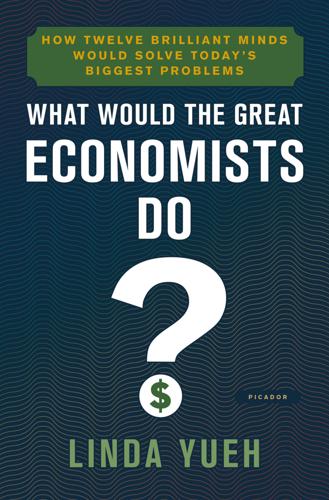
What Would the Great Economists Do?: How Twelve Brilliant Minds Would Solve Today's Biggest Problems
by
Linda Yueh
Published 4 Jun 2018
Eastern Tennessee is where the atomic bomb was developed. Federal funding now fosters advanced industries, so those with a high proportion of R&D spending, and STEM (science, technology, engineering and mathematics) workers. For instance, the funding for Oak Ridge National Laboratory supports the development of 3D printing (also known as ‘additive manufacturing’). This automated process requires only human programming for just one robotic arm to produce the husk of a car, secreting layer upon layer of plastic. The associated manufacturers who supply the parts and distribute the products also benefit. The company working with Oak Ridge to create the plastics that make the car body strong enough to withstand road stress is a reminder that manufacturing is still based in factories, as is clear from the smell of melting plastic and the loud whirling of machines that accompany this high-tech process.
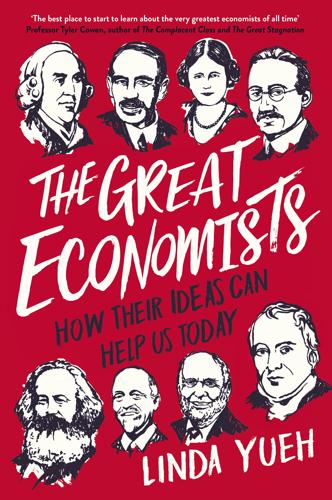
The Great Economists: How Their Ideas Can Help Us Today
by
Linda Yueh
Published 15 Mar 2018
Eastern Tennessee is where the atomic bomb was developed. Federal funding now fosters advanced industries, so those with a high proportion of R&D spending, and STEM (science, technology, engineering and mathematics) workers. For instance, the funding for Oak Ridge National Laboratory supports the development of 3D printing (also known as ‘additive manufacturing’). This automated process requires only human programming for just one robotic arm to produce the husk of a car, secreting layer upon layer of plastic. The associated manufacturers who supply the parts and distribute the products also benefit. The company working with Oak Ridge to create the plastics that make the car body strong enough to withstand road stress is a reminder that manufacturing is still based in factories, as is clear from the smell of melting plastic and the loud whirling of machines that accompany this high-tech process.
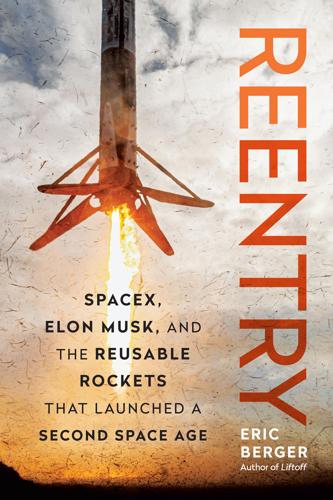
Reentry: SpaceX, Elon Musk, and the Reusable Rockets That Launched a Second Space Age
by
Eric Berger
Published 23 Sep 2024
For the suit’s gloves, which are often the most difficult component, Tenenbaum hired a mechanical engineer named Peter Homer who had independently won two NASA challenges for glove design. Homer’s gloves, initially designed for the fun of it, were made entirely of fabric for maximum dexterity even during pressurization of the suit. This basic design is flying today. SpaceX also pushed to additively manufacture the helmets and had to win over skeptics about the quality of 3D-printed material—some NASA engineers were not thrilled by the prospect of plastic protecting the heads of astronauts. But by printing the helmet, the contouring and sizing could be easily customized. In the end, Tenenbaum and his team whittled the price down to a small fraction of what David Clark had asked for.
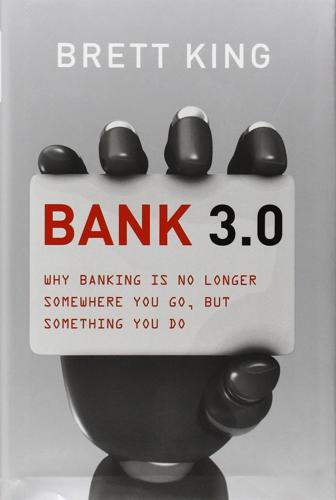
Bank 3.0: Why Banking Is No Longer Somewhere You Go but Something You Do
by
Brett King
Published 26 Dec 2012
In the past, manufacturing something made out of a plastic was generally done through a technique called injection moulding. For metal forms, components were either cut from a block of raw material, cast via a mould, or cut from steel plate. Often these methods required a very expensive mould or die that was used for that one single component. 3D printing allows new techniques such as additive manufacturing, where raw materials are used to build up the form gradually, printing one layer at a time. Figure 9.3: 3D printers are a reality today 3D printers are advancing in capability rapidly. Already 3D printers today can print wearable fabrics, integrated circuits, blood vessels, cells and organs (a kidney, a bladder and an ear have recently been printed, for example9), engine components, model aircraft, etc.

Confessions of an Eco-Sinner: Tracking Down the Sources of My Stuff
by
Fred Pearce
Published 30 Sep 2009
The phone screen is made of glass and ceramics. Then there are cobalt, lithium and carbon in the battery, silver in the keyboard and tantalum in the capacitors. A typical mobile phone today weighs only around 75 grams, but taking its many ingredients from the Earth requires the mining of 30 kilograms of rock. In addition, manufacturing the chips requires several hundred litres of water, and the energy that probably comes from burning several tens of kilograms of fossil fuels. And making the batteries and keeping them charged through a phone’s typical two-year life raises the weight of a phone’s overall rucksack to about 75 kilograms – a thousand times the weight you carry in your pocket.
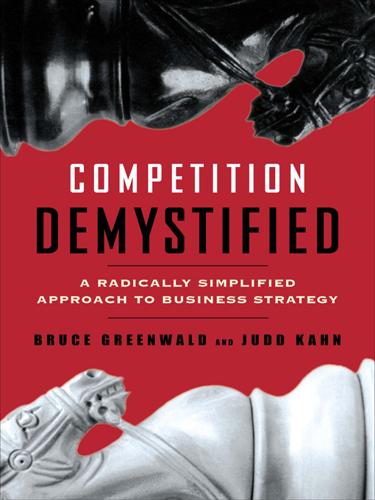
Competition Demystified
by
Bruce C. Greenwald
Published 31 Aug 2016
By including transportation in the quoted price, the suppliers prevented themselves from offering a hidden discount with a lower delivery charge. Advance notice of price changes. When one of the suppliers wanted to change—raise—the list price of the additive, the contracts called for it to give its customers thirty days’ notice, during which time they could order more supply at the existing price. Until 1977, the additive manufacturers issued press releases to announce these changes, but then ceased on advice of counsel. The refiners tried to induce other suppliers not to follow the leader in raising prices, but almost always to no avail. There were thirty price increases in the five years starting in 1974, and all of them held.
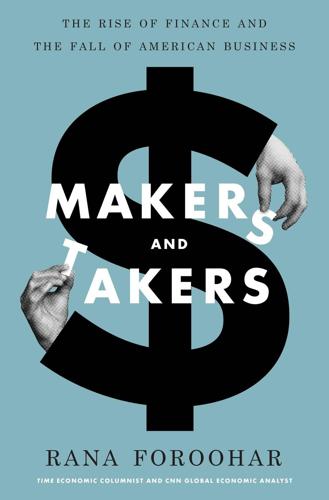
Makers and Takers: The Rise of Finance and the Fall of American Business
by
Rana Foroohar
Published 16 May 2016
And it’s using more local small and midsize suppliers, thanks to new technologies that let start-ups achieve more speed and scale. The once-disparate steps of designing a product, making or buying the parts, and putting everything together are beginning to blend, because of such technologies as additive manufacturing and 3-D printing. As a result, manufacturing operations now want to be physically closer to engineering and design. This dynamic will likely benefit the United States, which still rules those high-end job categories, and allow small and midsize American firms to get back into manufacturing.

The Future of the Professions: How Technology Will Transform the Work of Human Experts
by
Richard Susskind
and
Daniel Susskind
Published 24 Aug 2015
Traditionally, these machines were subtractive—the final object was milled out of a larger object, or cut from a large sheet of material. New 3-D printing techniques, a widely discussed technology, instead are additive—they print multiple thin layers of material on top of one another, gradually building up final objects (hence its other name, ‘additive manufacturing’). Their significance is that they can, as a result, create more sophisticated or more one-off objects on demand (sometimes referred to as ‘mass customization’). 3-D printers were first used to create small models and ‘rapidly prototype’ initial concepts. Now they are put to service in the fabrication and construction of the final buildings themselves.

Open: The Story of Human Progress
by
Johan Norberg
Published 14 Sep 2020
This view of the production process is arbitrary, according to Sowell, but it is just what we should expect of a hunter-gatherer mentality, where the relevant production and consumption process is exhausted by two steps: 1) hunt or gather, and 2) eat. In a complex economy you would also have to ask who funded the additive manufacturing centre and who made sure that great skin lotion ends up with the person with a desperate itch on the other side of the globe. This means lenders and middlemen do not take away anything from you but add to a positive-sum result. But since they don’t seem to cause physical objects to come into being, many think of them as social parasites, and when these groups have been associated with minority groups like Jews or overseas Chinese, this hostility has sometimes exploded into scapegoating and violence.
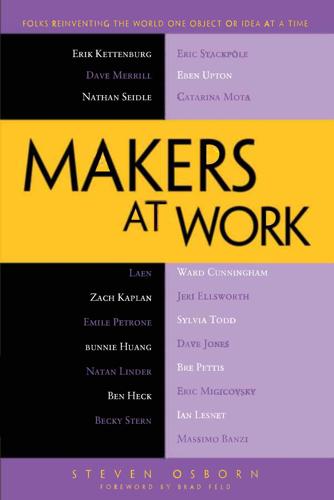
Makers at Work: Folks Reinventing the World One Object or Idea at a Time
by
Steven Osborn
Published 17 Sep 2013
I’m excited about what you guys are doing and suspect you’ll do very well. 1 Sam Zell is the US billionaire head of Equity Group Investments, which has holdings ranging from real estate to media to healthcare. 2 The business school at MIT. 3 Computer Numerical Control, or computer automation of physical processes. 4 www.afinia.com/ 5 www.shapeoko.com/ 6 www.shapeways.com/shops/nervous 7 Fused Deposition Method, an additive manufacturing method used in hobbyist 3D printers that utilize ABS or PLA filament. CHAPTER 9 Ben Heck Host The Ben Heck Show Benjamin Heckendorn is the host of The Ben Heck Show (revision3.com/tbhs), sponsored by element14.1 Throughout his career, Ben has been a graphic artist, video editor, pinball machine designer, book author, console modder, and hardware hacker.
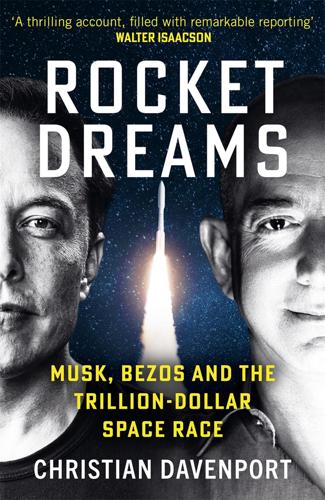
Rocket Dreams: Musk, Bezos and the Trillion-Dollar Space Race
by
Christian Davenport
Published 6 Sep 2025
IF THE “AMAZON JEFF” had been absent for much of Blue Origin’s existence, he showed up at a company meeting on Saturday, June 24, 2017. The weekend gatherings had become a tradition in which executives and program directors provided updates on different aspects of the company. Outsiders would sometimes visit as well, to talk about topics such as additive manufacturing, software development, or advancements in composite materials. About once a year, Bezos, standing in a common room by a fireplace designed to look like flames shooting from a Jules Verne–style rocket, would take questions in an “ask me anything” format. On this Saturday, the questions on employees’ minds centered around the new direction the company seemed to be heading in, the company’s culture, and its reputation of plodding along slowly.

Connectography: Mapping the Future of Global Civilization
by
Parag Khanna
Published 18 Apr 2016
In early 2015, the trading house Itochu made the largest Japanese foreign investment ever in China, buying (together with Thailand’s CP Group) a 10 percent stake in CITIC, one of China’s oldest and most respected conglomerates. CHAPTER 7: THE GREAT SUPPLY CHAIN WAR 1. Interview with author, July 18, 2015. 2. Enrico Moretti, The New Geography of Jobs (Houghton Mifflin Harcourt, 2012). 3. Josh Tyrangiel, “Tim Cook’s Freshman Year: The Apple CEO Speaks,” Bloomberg Businessweek, Dec. 6, 2012. 4. However, additive manufacturing and the sharing economy together do cause tremendous domestic dislocation. The construction sector is not tradable, but it can increasingly be automated as entire homes are designed, printed, and assembled out of 3-D printing kits, displacing contractors and builders across America and Europe. 5.

The omnivore's dilemma: a natural history of four meals
by
Michael Pollan
Published 15 Dec 2006
Evidently we're moving into the fourth age of food processing, in which the processed food will be infinitely better (i.e., contain more of whatever science has determined to be the good stuff) than the whole foods on which they're based. The food industry has gazed upon nature and found it wanting—and has gotten to work improving it. Back in the seventies, a New York food additive manufacturer called International Flavors & Fragrances used its annual report to defend itself against the rising threat of "natural foods" and explain why we were better off eating synthetics. Natural ingredients, the company pointed out rather scarily, are a "wild mixture of substances created by plants and animals for completely non-food purposes—their survival and reproduction."

The Bill Gates Problem: Reckoning With the Myth of the Good Billionaire
by
Tim Schwab
Published 13 Nov 2023
This analysis, like most of the critical reporting that came out about COVAX, failed to mention that it was a Gates Foundation project. As the global poor went unvaccinated, more than a hundred national governments signed on to petition the World Trade Organization to suspend Covid-19 vaccine patents, the first step in a process that could allow additional manufacturers to begin production, expanding the availability of vaccines to the poor. Waiving patents, in and of itself, wouldn’t solve the problem—Big Pharma would still need to share the know-how and help manufacturers scale up production—but it was a first, crucial step. In response, Bill Gates declared that the poor nations calling for waivers—the same poor nations his foundation claims to serve—didn’t understand how the world worked.

Future Crimes: Everything Is Connected, Everyone Is Vulnerable and What We Can Do About It
by
Marc Goodman
Published 24 Feb 2015
They may well be a tremendous force for good, but as we have seen throughout this chapter, robots are also being used by street thugs, Peeping Toms, narco-cartels, and terrorists, a trend that will surely accelerate as their functionality improves and their prices drop, particularly in response to incredible new and complementary technologies such as 3-D printing. Printing Crime: When Gutenberg Meets Gotti Restrictions are difficult to enforce in a world where anybody can make anything. HOD LIPSON 3-D printing, or, as it is sometimes called, additive manufacturing, promises to bring the Star Trek replicator to life. At the push of a button, a magical machine can make physical objects before your very eyes using a wide array of materials, including plastic, metal, wood, concrete, ceramics, and even chocolate. Just as you can send a photograph to your 2-D ink-jet printer, so too can you download or create a design on your laptop and send it to a 3-D printer, which, using a variety of techniques, can build objects in three dimensions, layer by layer, with incredible precision.

Energy and Civilization: A History
by
Vaclav Smil
Published 11 May 2017
Such excessive diversity results in a considerable misallocation of energies, but there appears to be no end to it: electronic access to the global selection of consumer goods has already multiplied the choice available for Internet orders, and the customized production of many consumer items (using individualized adjustments of computer designs and additive manufacturing) would raise it to yet another level of excess. The same is true of speed: do we really need a piece of ephemeral junk made in China delivered within a few hours after an order was placed on a computer? And (coming soon) by a drone, no less! But regardless of the indicators used, those kinds of wasteful, unproductive, and excessive final energy use are still in the global minority.

The Singularity Is Near: When Humans Transcend Biology
by
Ray Kurzweil
Published 14 Jul 2005
Of particular importance is the fact that an assembler can create copies of itself, unless its design specifically prohibits this (to avoid potentially dangerous self-replication), The incremental cost of creating any physical product, including the assemblers themselves, would be pennies per pound—basically the cost of the raw materials. Drexler estimates total manufacturing cost for a molecular-manufacturing process in the range of ten cents to fifty cents per kilogram, regardless of whether the manufactured product were clothing, massively parallel supercomputers, or additional manufacturing systems.80 The real cost, of course, would be the value of the information describing each type of product—that is, the software that controls the assembly process. In other words, the value of everything in the world, including physical objects, would be based essentially on information.
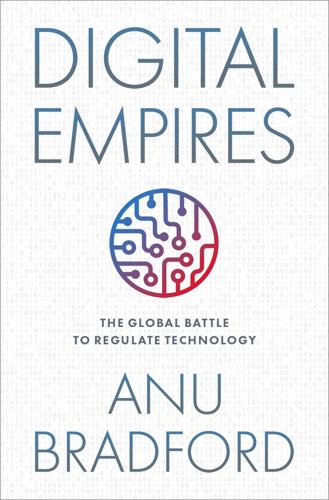
Digital Empires: The Global Battle to Regulate Technology
by
Anu Bradford
Published 25 Sep 2023
In addition to vesting the BIS with permanent authority to implement and enforce the export control regime, the ECRA expands the US government’s ability to restrict the transfer of “emerging and foundational technologies” to entities abroad whenever those technologies are “essential to the national security of the United States.”12 While the list of such technologies has not yet been finalized, it is expected to include technologies such as artificial intelligence (AI) and machine learning technology, microprocessor technology, quantum computing, data analytics, brain-computer interfaces, additive manufacturing, and robotics.13 The Department of Commerce has been criticized for the delay in finalizing the list of affected technologies, which allows for the unfettered export of these technologies in the meantime—potentially undermining US national security interests.14 For example, while the existing Commerce Control List already mentions “surveillance hardware,” it is silent on facial and voice recognition technologies that are common forms of modern surveillance.15 Such technologies are deployed, for instance, by the Chinese government in Xinjiang as part of the mass surveillance and detention of the Uyghur minority.